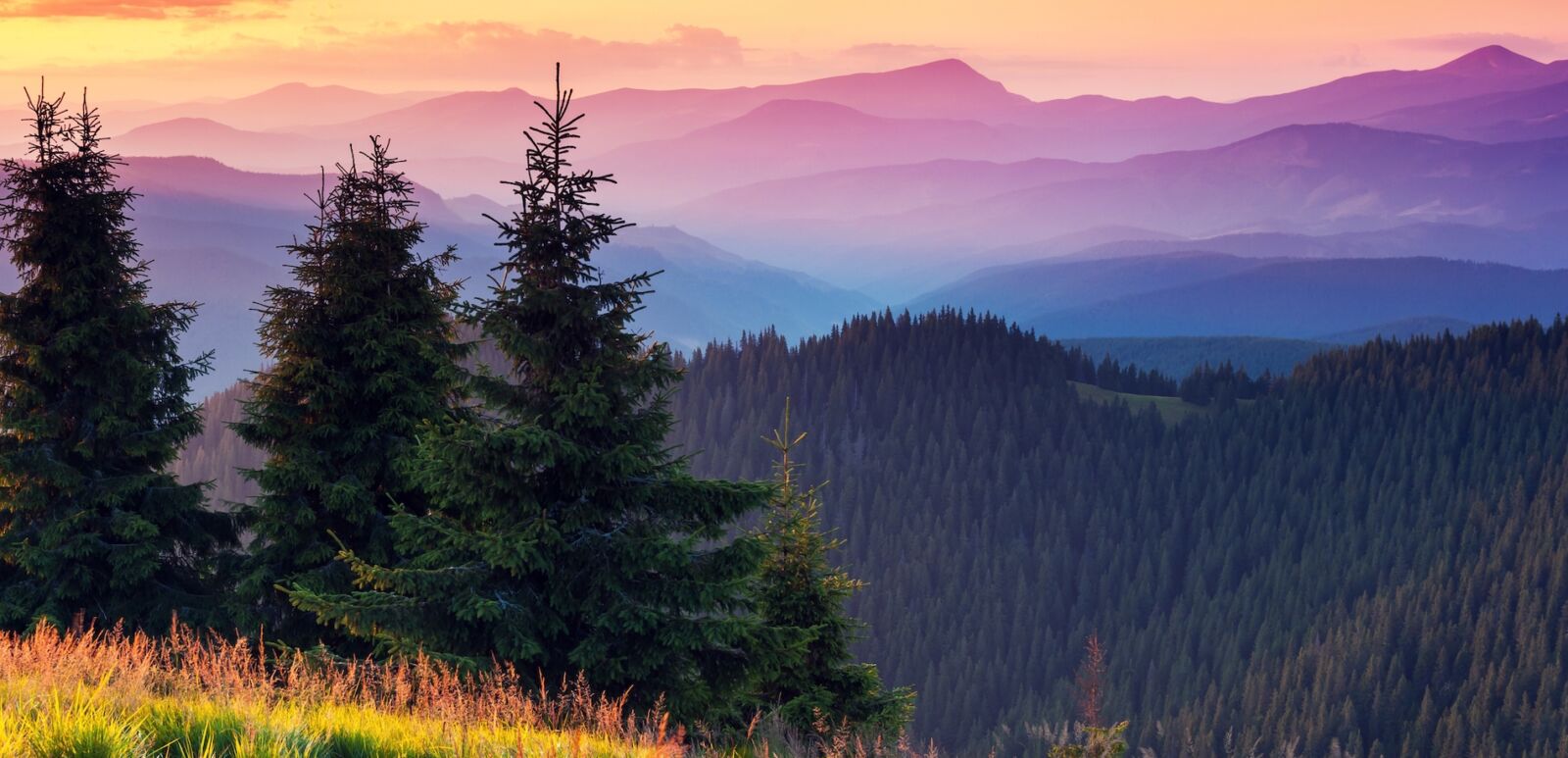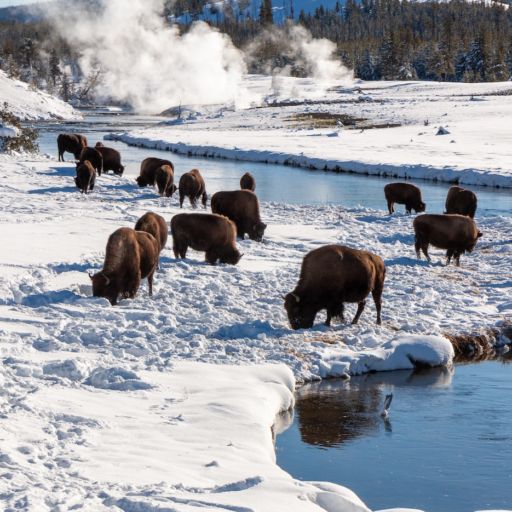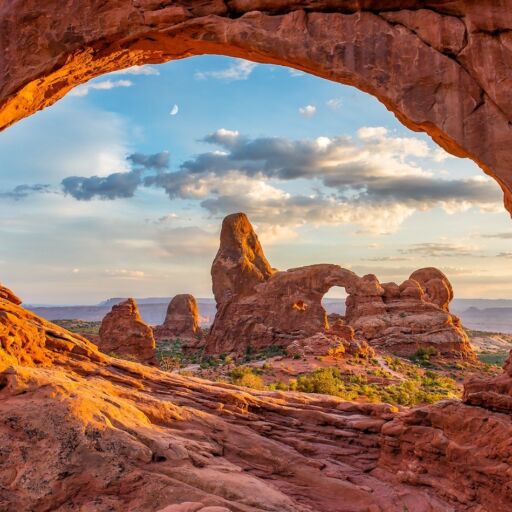What began in 1872 as a single, protected region called Yellowstone National Park has evolved into the National Park Service which encompasses 429 sites across the country and its territories. Sixty three of the historic areas have been designated as national parks that protect unique lands and ecosystems. The National Park Service is one of the best and most popular resources we collectively have to learn about our country’s history and it welcomed more than 325 million visits last year.
Each one of the national parks has something new to explore whether that be historically, recreationally, or culturally. A number of them have also been recognized by the United Nations Educational, Scientific and Cultural Organization (UNESCO) and designated as World Heritage sites — that’s a big deal — for their value to humanity, among other distinctions. The parks are also in flux, as all will be affected by climate change.
All this is to say — now’s the year to visit one (or another one). If you’re looking for an off-the-grid experience where the only thing you hear is the squawk of birds and the echo of your thoughts, there’s a park for that. If visiting a national park means sunbathing on sandy beaches before exploring delicate coral reefs while snorkeling, there’s a park for that too.
Before you test-drive your bear whistle, make sure to check the National Park Service website for information about reservations, closures, and special events. Some parks will require timed-entry reservations, though you can stay as long as you’d like.
Acadia National Park – Maine
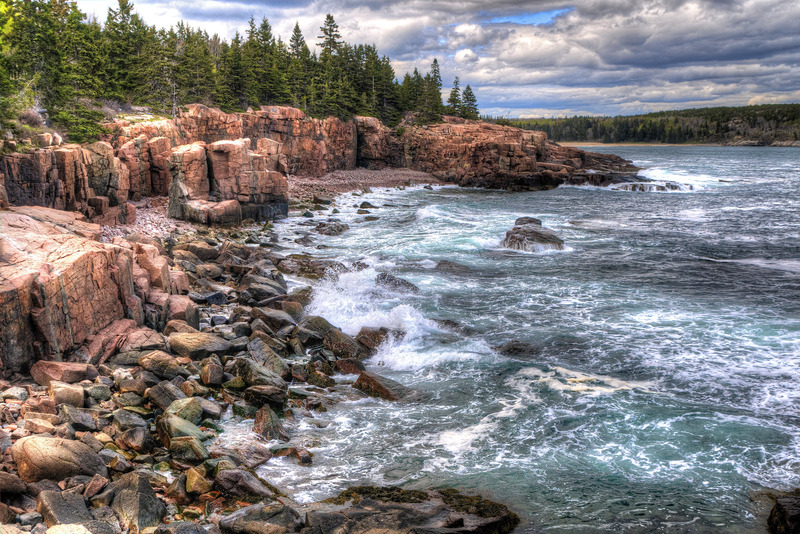
Dubbed the “Crown Jewel of the North Atlantic Coast,” Acadia National Park spans 47,000 acres of land along the mid-Maine coastline, just west of lobster-friendly Bar Harbor. As one of the most popular parks, millions visit annually who are there to take in the granite ridges and cliff sides carved by glaciers, which left prominent striations in the rock as well as kettle ponds in their slow-moving wake. Home to the highest rocky headland along the Atlantic, the park is ideal for hiking, rock climbing and biking with 158 miles of trails and 45 miles of car-free carriage roads. More challenging hikes include the Precipice Trail and Beehive Loop, complete with wooden bridges, iron rungs and steep granite staircases, but you can find flat land on the one-and-a-half mile trail, The Bubbles. Not a hiker? Skip the trails all together and enjoy the views from the passenger seat as you cruise the Acadia All-American Road. Better yet, opt for something truly unique to Acadia and head up to the summit of Cadillac Mountain. If you get there early enough, you can watch the United States’ first moment of sunrise at an elevation of 1,532 feet – just be sure to make reservations in advance.
2023 annual visitors: 3,879,890 (#7)
Arches National Park – Utah
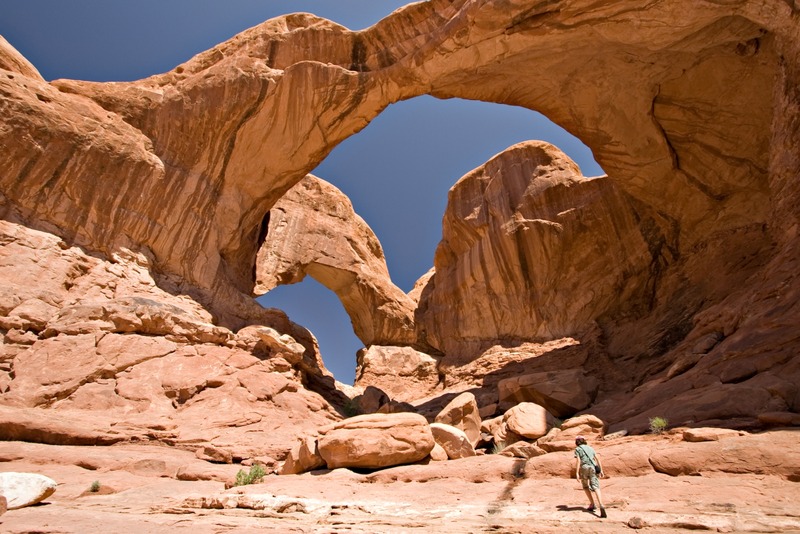
Arches National Park has the highest density of natural red sandstone arches on the planet: over 2,000 of them, all sculpted over thousands of years. Their impossible-looking figures have made this park quite popular, so we recommend avoiding the crowds and visiting during the spring when blue skies provide a striking backdrop for the rust-hued arches. We like Arches National Park because it’s approachable for hikers of all levels, and you can explore most of the park in less than three days. There are also plenty of opportunities for biking and rock climbing here as well. While every arch is beautiful in its own way, you’re here to see Delicate Arch, the largest freestanding arch at the park, accessible via the Park Avenue Trail, a moderate, three-mile hike round-trip. Another big hit is the Devils Garden Trail, which has over seven arches, including Landscape Arch, one of the longest arches on Earth. Timed-entry reservations are required through October 31, 2024, but thankfully, you can stay as long as you’d like.
2023 annual visitors: 1,482,045 (#21)
Badlands National Park – South Dakota
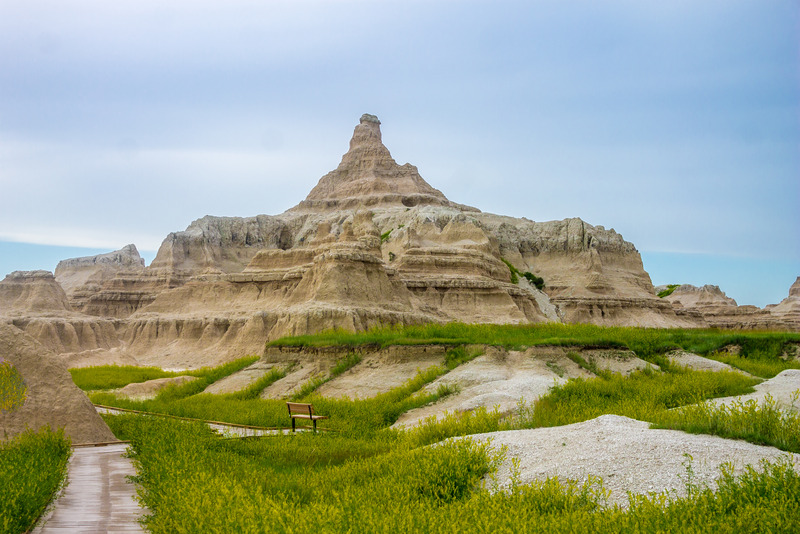
You’re visiting South Dakota to check the Mount Rushmore National Memorial off your bucket list and maybe to take in the exhaust-filled ether at the Sturgis Buffalo Chip Motorcycle Rally, but if Badlands National Park isn’t on your South Dakota bingo card, it should be. Designated a national park in 1978, Badlands comprises mixed-grass prairie lands where you can spot bison and other mammals grazing on a good day and admire the eroded rock formations across the park. The mission here is the preservation of the Oligocene fossil deposits within these formations along with the prairies’ fascinating ecosystem. It’s a great place to explore South Dakota’s serene landscape by foot before setting up your tent and stargazing at night. If you’ve only carved out enough time for a day trip, set out on the one-and-a-half-mile-long Notch Trail or the Saddle Pass trail. A bonus: several of the hikes here are easy to navigate and ADA accessible.
2023 annual visitors: 1,046,400 (#24)
Big Bend National Park – Texas
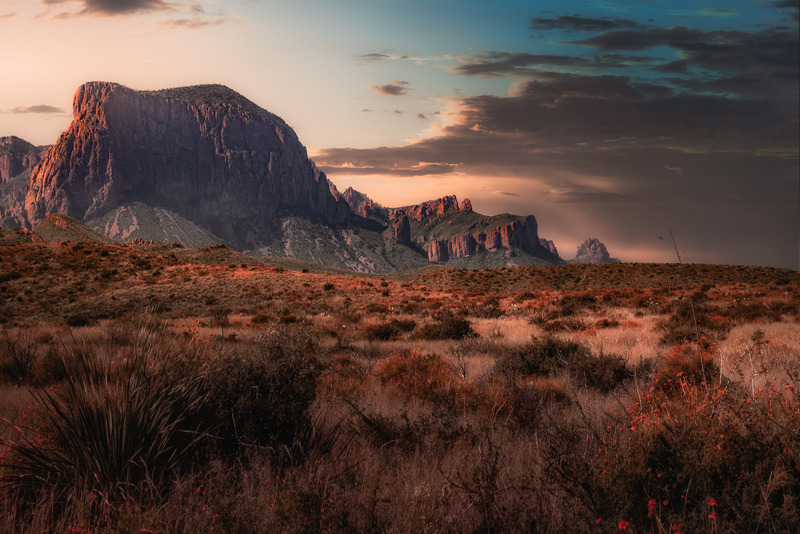
Because of its location in southwest Texas, you can visit Big Bend National Park year-round, but we recommend that you plan to visit the park in October or April when the sweltering heat is slightly less abrasive and the summer and spring break crowds have thinned. Situated along the Mexico border, there’s plenty to do across this park’s 801,163 acres, from backpacking the Chisos Mountains to days-long whitewater rafting or canoeing trips through one of the three major Limestone canyons along the Rio Grande River. The journey to this ultra-secluded landscape of the Chihuahuan Desert isn’t for the faint of heart; the drive from the nearest airport is a nearly 200-mile trip one way. Once you arrive though, you’re rewarded with arguably one of the most biodiverse parks in the country with more than 75 species of mammals and nearly 500 types of birds. When you’ve had your fill of roughing it, hop in your rental and drive an hour-and-a-half to the super artsy town of Marfa, Texas.
2023 annual visitors: 509,129 in 2023 (#40)
Biscayne National Park – Florida
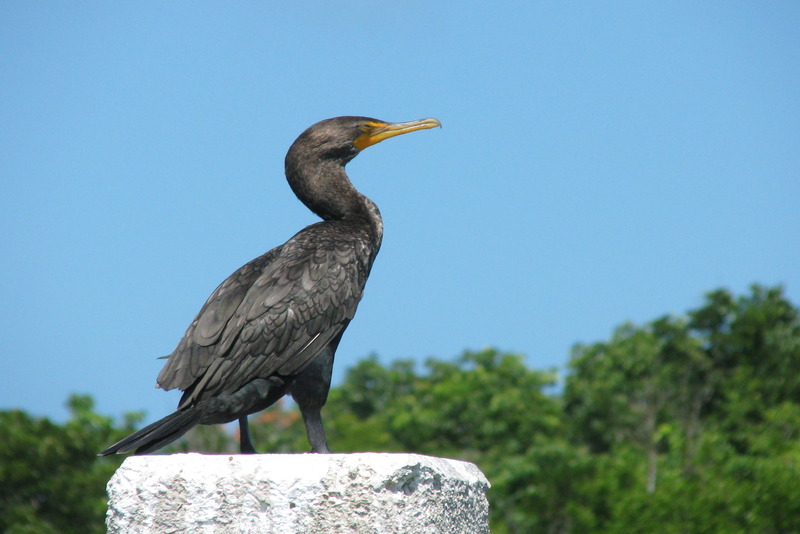
If your vision board consists of pictures of sandy beaches and tropical fish darting through cerulean waters, then you need to get yourself to Biscayne National Park. Unlike so many of the other parks on our list covered in mountains and craggy buttes, 95 percent of Biscayne is covered with water, while the other five percent consists of low, dry land and mangrove swamp. The park is located just south of Miami and protects parts of the northern Florida Reef, one of the biggest coral reefs on the planet. There’s plenty of great snorkeling to be done here: expect to see a bevy of different fish, soft and hard corals and endangered species like manatees and sea turtles.
2023 annual visitors: 571,242 (#36)
Black Canyon of the Gunnison National Park – Colorado
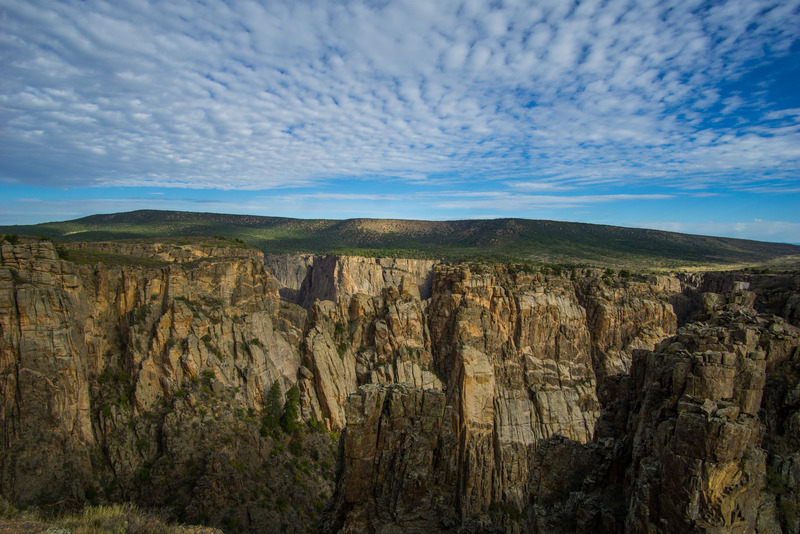
Black Canyon of the Gunnison National Park may be a mouthful to say, but the western Colorado park earned its name from the fact that certain areas of the park’s narrow Black Canyon receive only 33 minutes of light a day, an eerie revelation once you see how deep the canyon cuts into the Earth. Across the park’s 30,750 acres of raw wilderness lie the jagged spires and plunging cliffs of this canyon that descends 2,700 feet at its deepest and extends just 40 feet wide at its narrowest point. And, while it may not be as popular as Rocky Mountain National Park, Black Canyon of the Gunnison has some of the most extreme cliffs in the country, making it a haven for experienced rock climbers. If hiking is more your jam – and if you’re a pro – follow the challenging Gunnison Route deep into the canyon. Though it’s less than two miles out and back, the trail is exceedingly steep, so proceed with caution. If, on the other hand, you’ve got two left feet and a will to live (like us), stick to easier trails like the Rim Rock Nature trail or the half-mile out-and-back Devils Lookout trail.
2023 annual visitors: 357,069 (#47)
Bryce Canyon National Park – Utah
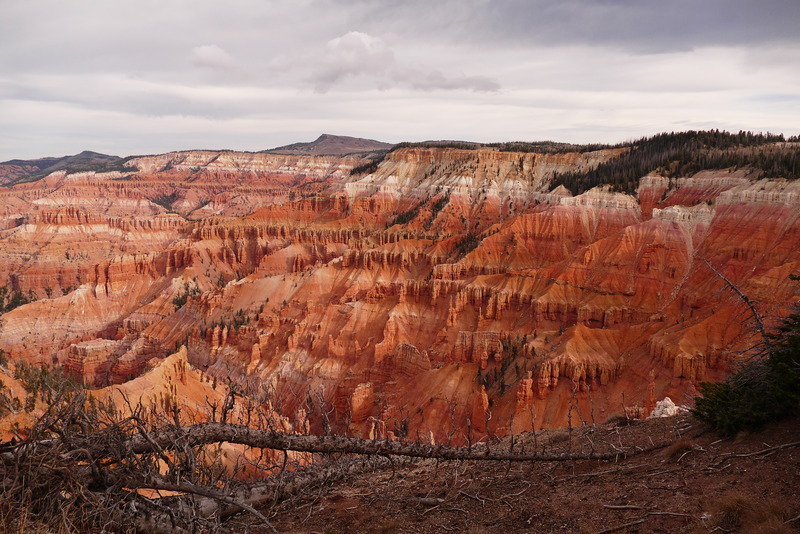
You’re here to see the largest concentration of hoodoos on the planet and to repeat the word “hoodoo” over and over again until everyone you’re traveling with is sufficiently annoyed. If you don’t know what a hoodoo is (don’t worry, not many people do), it is merely a tall, striking, and weathered rock spire that juts forth from the ground toward the heavens. Seriously, it looks very alien and cool. By day, you can follow the Rim trail around the outer perimeter of the Amphitheater and stare at the orange sherbet hoodoos and slot canyons around the park. By night, you can set up camp and gaze at the stars at this designated International Dark Sky Park. If you’re more of a passenger princess or if you’re short on time, you can view the Amphitheater from one of four main viewpoints off the main road. If you do have a few hours to spend here, we recommend taking a guided horseback ride into the Bryce Canyon Amphitheater along a dedicated equestrian trail.
2023 annual visitors: 2,461,269 (#15)
Canyonlands National Park – Utah
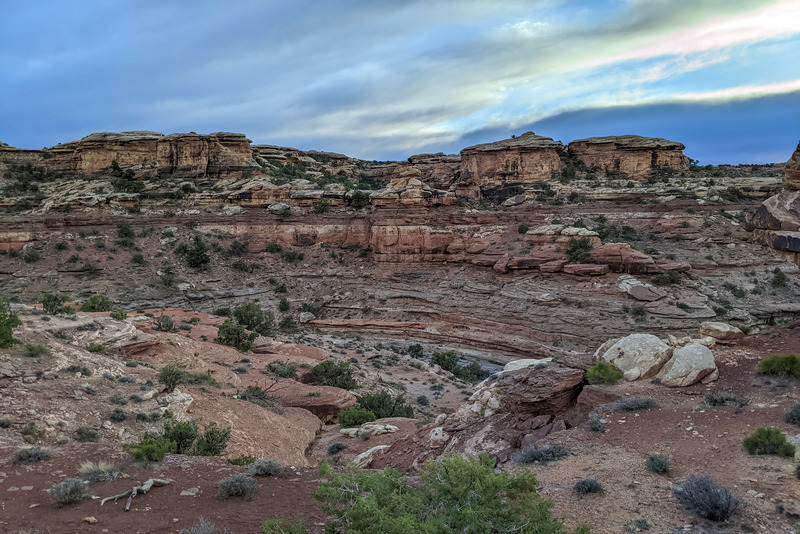
Sure, people go here to off-road and explore Utah’s iconic slot canyons, but Canyonlands National Park has treasures beyond the confines of your Jeep. Though it’s less popular than some of the state’s other national parks, Canyonlands is Utah’s largest national park, covering 337,570 acres of eroded land split into three unique districts; the Island in the Sky, the Maze, and the Needles. Divided by the Colorado and Green Rivers, each district has a little something different to offer, like red rock buttes and majestic views of Grand View Point and Mesa Arch in the Island in the Sky District. The Maze district has been called one of the least accessible areas in the country due to its remote location and tricky-to-navigate roads and trails system. Believe us, it’s for experienced backcountry folks only. If you’re looking for a less challenging yet equally stunning hike, check out The Needles district where you can go camping and hike the still-strenuous Lost Canyon trail.
2023 annual visitors: 800,322 (#28)
Capitol Reef National Park – Utah
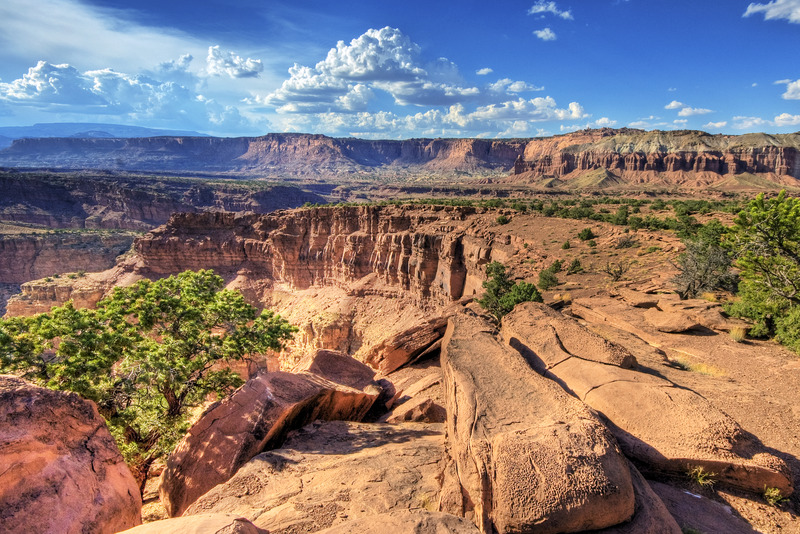
A two-and-a-half hour drive west from Canyonlands, Capitol Reef National Park is covered with stunning red rocks and is home to a geological monocline, a line of sharply bending rock strata that extend nearly 100 miles across the park. Named the Waterpocket Fold, the wonder resembles a wrinkle or steep spine in an otherwise horizontal layer of rock and was formed roughly 60 million years ago. While it’s no doubt a defining feature of the park, there’s a lot more to see and do here, with many activities beginning at the Fruita area, a lush valley rich with geological history that has been home to humans for thousands of years. It’s a great place to start hikes that range from beginner to advanced. A trek through the park ensures sweeping canyon panoramas, arches and desert rock formations. The real stars of the show here, however, are the orchards which provide ample opportunities for picking apricots, peaches, pears and apples depending on the season.
2023 annual visitors: 1,268,861 (#22)
Carlsbad Caverns National Park – New Mexico
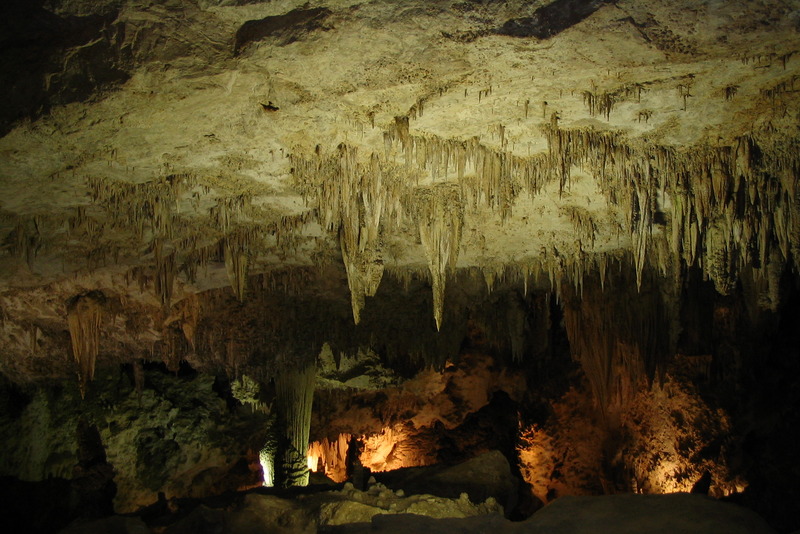
Tucked in the Guadalupe Mountains not far from the Texas border, Carlsbad Caverns National Park is where to go for mystifying, yet still highly accessible underground passageways. The park gives trekkers an inside glimpse of Carlsbad Cavern and the Hall of the Giants, or Big Room – a massive underground chamber that is the largest of its kind in North America – along with 118 other caves, though many are closed to the public. Above ground, nearly two-thirds of the park has been designated a wilderness area to preserve the Chihuahuan Desert. If you want to explore the caverns on one of the ranger-guided tours, plan ahead as spots can fill up fast.
2023 annual visitors: 394,121 (#45)
Channel Islands National Park – California
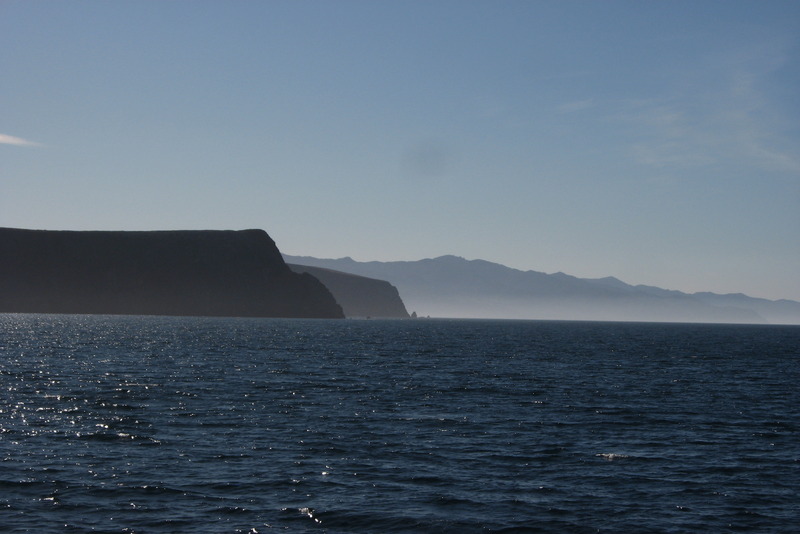
Encompassing five of the eight Channel Islands off of the coast of Southern California, Channel Islands National Park is an ecosystem of more than 2,000 species of plants and animals – which may not sound that impressive until you learn that 145 of those species are unique to the park. Thanks to the separateness of the islands, much of the plant life and precious archeological findings here are not found anywhere else on the planet. Because of the breadth of resources here, the islands were designated a UNESCO Biosphere Reserve in the mid-70s, and the Channel Islands National Marine Sanctuary spans six nautical miles surrounding the park. The islands are only accessible by one of the park concessionaire boats, which you’ll want to book ahead, and you’ll need to be comfortable exploring the islands by foot. While you trek through the park, keep an eye out for endemic critters like the adorable Island Fox and flora and the endangered Torrey Pine. If you’re fond of water sports, rent a kayak and explore the astonishing sea caves.
2023 annual visitors: 328,746 (#50)
Congaree National Park – South Carolina
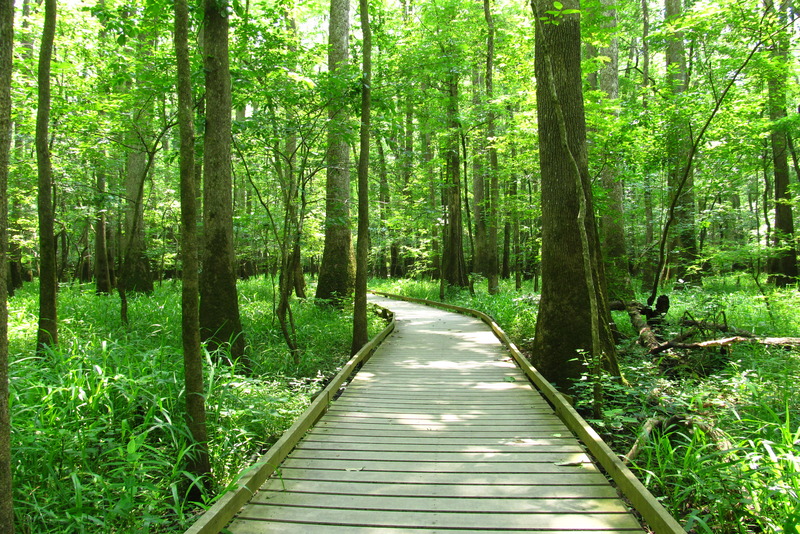
Congaree National Park is in the business of preserving the largest old growth bottomland hardwood forest in the United States. You’ll want to carve out time to journey through the verdant floodplain forest, home to one of the highest temperate deciduous forest canopies in the world. Spread across nearly 27,000 acres in South Carolina, more than half of the park here is designated wilderness area, making it a great place for overnight backpackers. Both the Congaree and Wateree Rivers flow through the park, so depending on the time of year you visit, treks can lean swampier. If you prefer drier hikes, come in the spring. Like other well-preserved parks on our list, Congaree is designated a UNESCO biosphere reserve. At less than two hours by car from Charleston, it’s also a heck of a day trip from the Holy City.
2023 annual visitors: 250,114 (#51)
Crater Lake National Park – Oregon
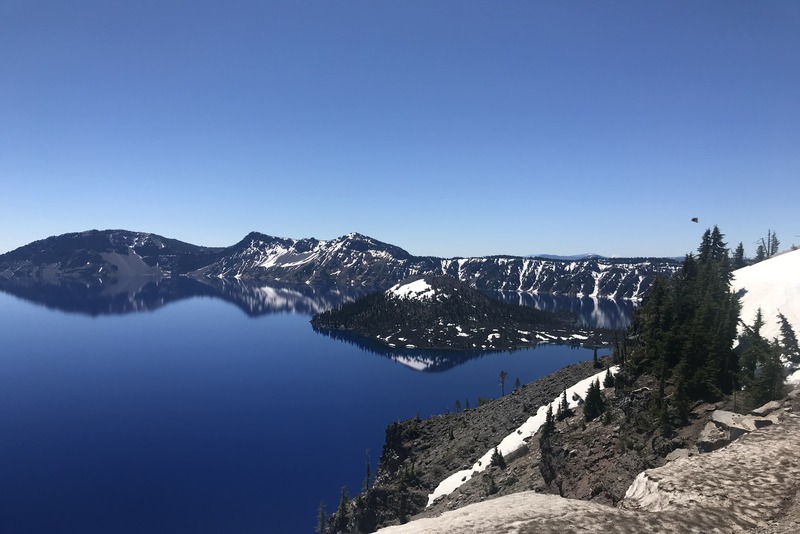
As the fifth oldest national park in the country, Crater Lake National Park has hosted outdoor enthusiasts for over 120 years. Crater Lake, the focal point of this park, formed after a volcano named Mount Mazama collapsed into a crater where water pooled over thousands of years. That pool slowly grew into what is now the second deepest lake in the United States — and the ninth deepest in the world — and is known for its intensely blue, clean waters. There are 90 miles of hiking trails in this stretch of the Cascade Mountains but you might get the best panoramic views cruising in a car along the East and West Rim Drive. In the summer, the weather is perfect for a two-hour boat cruise on the lake. But in the winter, the park receives some of the most substantial snowfall in the country, turning its trails into a snowshoer’s dream.
2023 annual visitors: 559,976 (#37)
Cuyahoga Valley National Park – Ohio
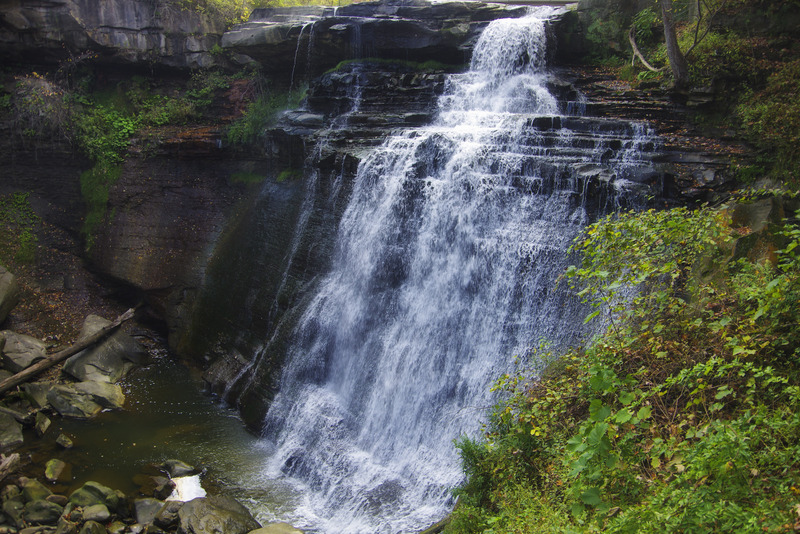
Cuyahoga Valley National Park is an elongated, narrow park between Akron and Cleveland in northeastern Ohio where broad and narrow hillsides lead to wide open meadows. It’s close enough to Cleveland for a day-trip and is chock-full of deciduous forests to explore via 125 miles of hiking and biking trails. The Cuyahoga River runs through the park and is the star of the show here, feeding marshes and swamps along with plunging waterfalls. Speaking of waterfalls, check out Blue Hen Falls, Bridal Veil Falls and Brandywine Falls — the latter drops 65 feet waterfall and is one of the park’s most popular features. A trek along the Ohio and Erie Towpath trail, an 87-mile gravel footpath that runs parallel to the Cuyahoga River, is especially beautiful in the spring when the wildflowers bloom. If you’ve got little ones in tow or aren’t interested in a walk-about, book a ticket on the Cuyahoga Valley Scenic Railroad and take in the midwest beauty from a glass dome observation car.
2023 annual visitors: 2,860,059 (#12)
Death Valley National Park – California and Nevada
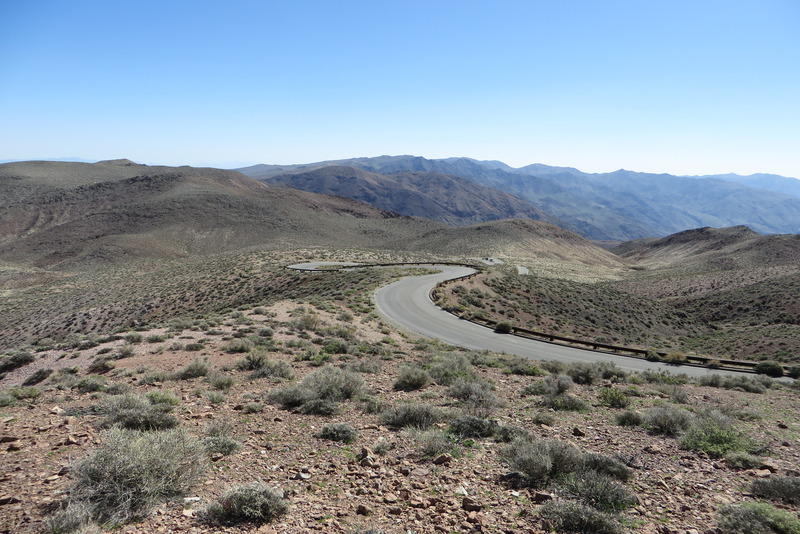
While it may bear the most ominous, fear-inducing name of all the parks, and may be one of the hottest places on earth, Death Valley National Park can be heavenly if you know when to visit. Since temperatures here lean scorchingly hot, we recommend that you visit in April when the highs hover in the mid-70s and the wildflowers are abundant. When you’re done smelling the blooms, see the rippling Mesquite Flat Dunes, a massive dunefield made of sand from Northern eroding mountains perfect for viewing a sunset. Don’t forget to wake up early and catch a colorful sunrise at Zabriskie Point the next morning; a famed vista overlooking the two-toned badlands, distant salt flats, and Panamint Mountains. At less than two hours from Las Vegas, you’ll want to factor in time for a night stay at a swanky hotel on The Strip before you fly back home.
2023 annual visitors: 1,099,632 (#23)
Denali National Park and Preserve – Alaska
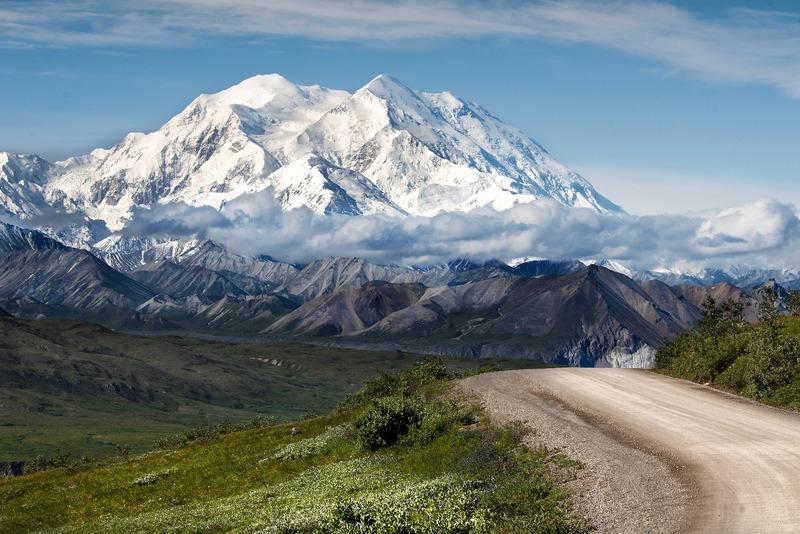
A single, curving road divides six million acres of unspoiled Alaskan terrain at Denali National Park and Preserve. The park is home to the tallest mountain in North America, Denali, towering 20,310 feet above sea level, but also stuns with the coniferous Taiga biome and massive glaciers. With only 35 miles of marked trails, mountaineers flock to Denali to forge their own paths through forest and past rivers and streams where wildlife like brown bears, caribou and moose roam freely. That doesn’t mean casual hikers can’t enjoy Denali. Manageable day-hikes like the five mile out-and-back Mount Healy Overlook trail and the easy two mile Horseshoe Lake trail give you a glimpse of snow covered peaks that linger through the summer.
2023 annual visitors: 498,722 (#42)
Dry Tortugas National Park – Florida
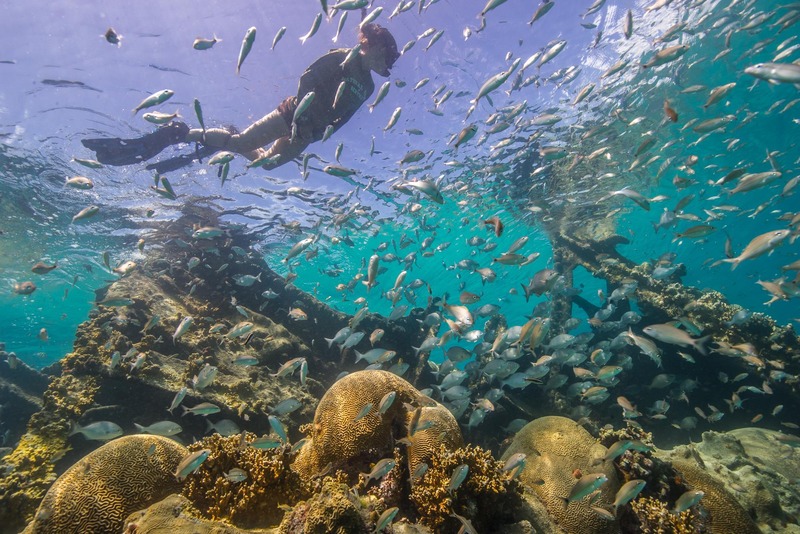
Situated 70 miles west of Key West in the Gulf of Mexico, Dry Tortugas National Park comprises seven islands at the southernmost part of the Florida Keys. Their open waters are rich with 30 species of coral reef and marine life and birds are visible at every turn of the paddleboard. Water sports reign supreme here, whether that be snorkeling, scuba diving, kayaking or just swimming. If you’re less comfortable in the water, you can check out Fort Jefferson, the largest brick masonry structure in all of the Americas. Avid hikers are better suited visiting Florida’s other and arguably more popular Everglades National Park. Dry Tortugas is a great destination for beach lovers, but there aren’t substantial trails here. The park is only accessible via seaplane, boat or ferry, so you’ll need to plan ahead, and if you plan on sleeping beneath the stars, you’ll want to stay on Garden Key; the second biggest largest island in the Dry Tortugas and the only place to camp. Consult the National Park Service website about camping as reservations are required weeks and sometimes months in advance.
2023 annual visitors: 84,285 (#55)
Everglades National Park – Florida
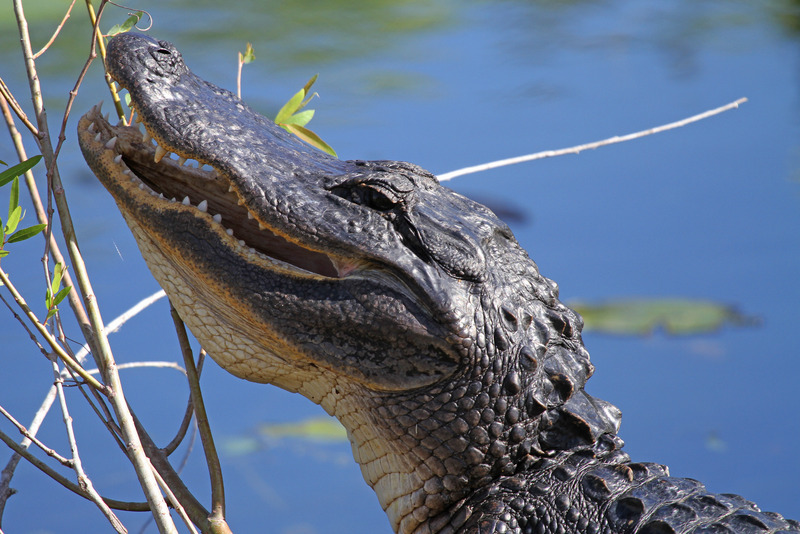
As the largest subtropical wilderness in America, the South Florida park extends 1.5 million acres of cypress and mangrove swamplands. You’re here to see one of over 32 endangered wildlife species including West Indian manatees, American crocodiles, Florida panthers and five types of sea turtles – though they aren’t the only creatures here. Take a break from Florida’s white sand beaches and sign up for an airboat tour to see plenty of exotic birds, alligators, otters, toads and more as you navigate the wetland preserve. Beyond swamp tours, try your hand out at fishing and explore the pinelands and sawgrass prairies by foot.
2023 annual visitors: 810,189 (#27)
Gates of the Arctic National Park and Preserve – Alaska
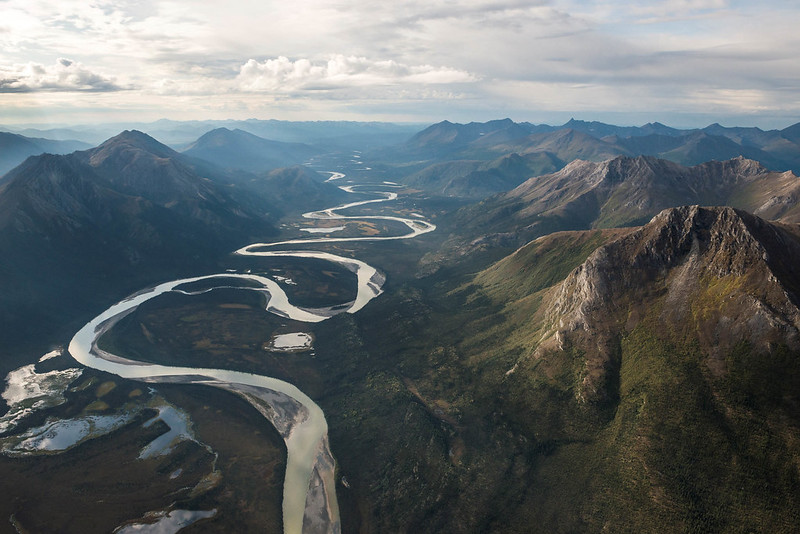
Gates of the Arctic National Park and Preserve isn’t for everyone. It has nearly eight-and-a-half million acres and is the second largest park in the country after Wrangell-St. Elias, but Gates is also the northernmost park in America, which is probably why it’s one of the least visited. Just over 11,000 visitors made the trek north of the Arctic Circle to this remote area of Alaska in 2023. It’s so remote that it’s only accessible via air taxis from Fairbanks or by foot from the village of Anaktuvuk Pass or the Dalton Highway. Wait, there’s more: The location makes the trip especially pricey and once you get there, you’ll find over seven million acres of rugged wilderness and no roads. Gates of the Arctic has all the makings of a bucket list item for the most intrepid.
2023 annual visitors: 11,045 (#63, last)
Gateway Arch National Park – Missouri

Leave your camping gear at home and meet me in St. Louis – sans Judy Garland, of course (RIP). Unlike so many of the national parks on our list, Gateway Arch National Park is a man-made monument, but what it lacks in forests and streams it makes up for with an American urban icon. The park centers around the famed Gateway Arch, or the Gateway to the West, which towers 630 feet high and is the tallest stainless steel monument on the planet. Designed by architect Eero Saarinen, Gateway Arch was originally built to commemorate the Louisiana Purchase, westward expansion and the groundbreaking Dred Scott case, where the Supreme Court voted to uphold slavery which became a contributing factor to the Civil War. At 91 acres, it’s the smallest national park in the country and only has five miles of walking paths to choose from, but you’re here for the history. After you zip to the top of the arch in one of the spacey pods, visit the free museum at the base of the arch to learn about St. Louis history and America’s complex relationship with indigenous communities through six interactive galleries. The Old Courthouse where the Dred Scott case was first heard is one of the oldest standing buildings in the city and also a historical draw, though it’s currently closed for renovations with plans to reopen in spring or summer of 2025.
2023 annual visitors: 2,422,836 (#16)
Glacier Bay National Park and Preserve – Alaska
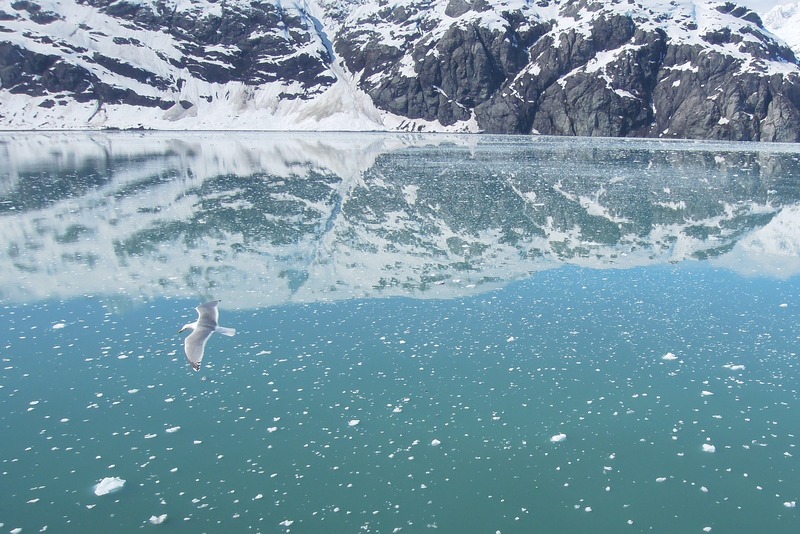
Glacier Bay National Park got its name from the plethora of terrestrial and tidewater glaciers within its borders, of which there are nearly 1,050. Within its three million acres, Glacier Bay has 600,000 acres of federally protected marine ecosystems, alongside alpine and coastal ecosystems, making it a great destination for outdoors enthusiasts looking for variety. You’re here to take advantage of that diversity by exploring snow-capped mountains, massive ice fields, snaking fjords, post-glacial meadows and wet tundras dotted with Sitka Spruce, all in a single trip. The park is located in Southeast Alaska west of Juneau, and like so many of the parks in the state, is accessible only via boat or plane from late-spring through late-summer.
2023 annual visitors: 703,659 (#32)
Glacier National Park – Montana
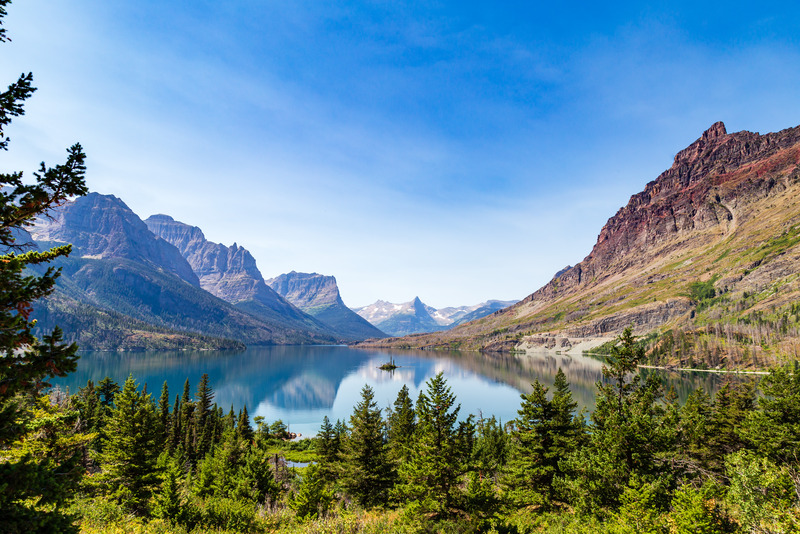
When Glacier National Park was established in Montana back in 1910, there were 150 active glaciers to explore over 1.3 million acres. Today, due to climate change, there are only about 25 active glaciers left — if there was ever a time to visit the park, it’s now. Not that Glacier National Park wasn’t already on everyone’s bucket list: last year, the park had nearly three million visitors. Dubbed the “Crown of the Continent,” there’s lakes, waterfalls and forests galore to see along treks here. It’s a friendly place for both novice hikers and experienced backpackers, the latter of which can opt for more strenuous hikes like the 17-mile Dawson/Pitamakan Pass loop trail through the Two Medicine Valley. By far the biggest draw at Glacier is the Going-To-The-Sun Road, a 50-mile drive that guarantees stunning views at every turn and is listed as a National Historic Landmark. Before setting out on a Griswold-adjacent car expedition with your family, make sure to check the park website as vehicle reservations are now required.
2023 annual visitors: 2,933,616 (#11)
Grand Canyon National Park – Arizona
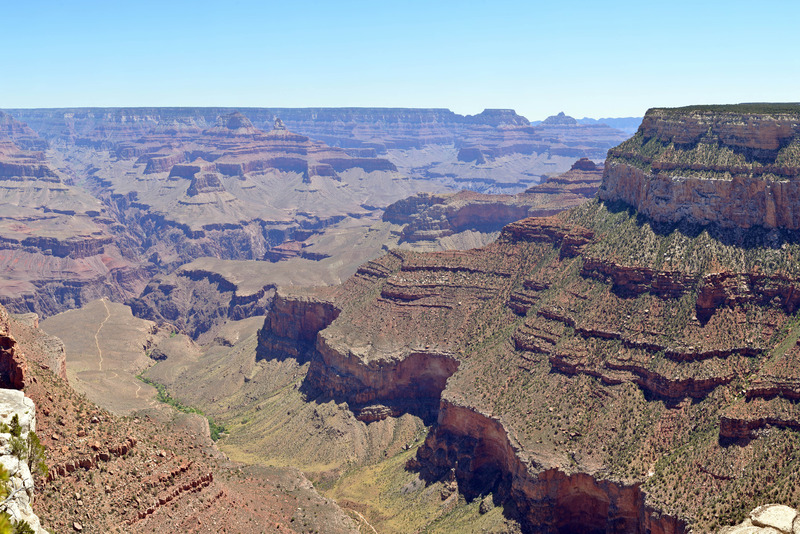
You know it, you love it, and even if you’ve never visited it, you’ve likely seen it in countless films and TV shows (“Thelma and Louise” anyone?). We’re talking about Grand Canyon National Park, the crown jewel of the West. It’s called “Grand” because it is, measuring 277 miles long and 18 miles across at its widest point. There’s a lot to see here, from hiking trails both at the rim and base of the canyon, to rapids you can ride on the Colorado River that runs through the canyon’s middle. To take in the majesty in its most concentrated dose, you’ll want to visit the Skywalk glass bridge at the westernmost edge of the Grand Canyon, which towers 4,000 feet in the air and extends 70 feet over the West Rim. You can even zipline here. The most popular area is the South Rim with multiple viewpoints and accommodations for visitors. If learning the history of the Indigenous tribes of the area is more your speed, you can take one of the many guided tours in the area either through the Hualapai or Navajo tribe. We recommend visiting in the springtime when it’s less crowded and the weather leans on the milder side; remember, you’re still in Arizona.
2023 annual visitors: 4,733,705 (#2)
Grand Teton National Park – Wyoming
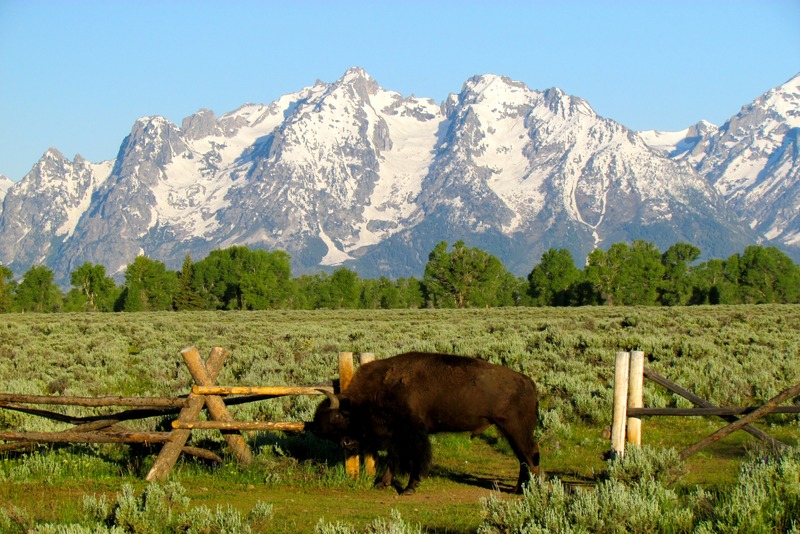
Grand Teton National Park is home to some of the oldest rocks in the National Park system, clocking in at around 2.7 billion years old. As part of the Grand Teton Mountain range, the 310,000 acre park is also a top spot for backpackers thanks to the range’s many hiking and rock climbing routes. Like its neighbor Yellowstone National Park, Grand Teton is brimming with wildlife, so if you’re here to see elk, bald eagles, bison or moose, book one of the wildlife tours in the area. And take in as much of the landscape as possible. Check out the wildflower meadows and watch the sunrise at the T.A. Moulton Barn (this is a famous structure that’s become an unofficial symbol of Jackson Hole; you’ve probably seen pictures). You’re just a handful of miles away from Jackson Hole, Wyo., too, which has fantastic skiing during the snowy season. Cue “Blame It On The Tetons” by Modest Mouse.
2023 annual visitors: 3,417,106 (#8)
Great Basin National Park – Nevada
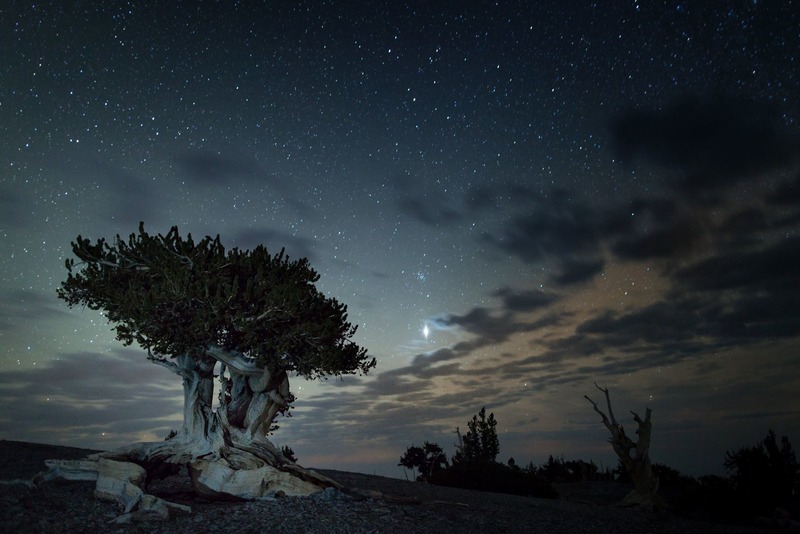
Great Basin National Park is 290 miles north of Las Vegas which means you can go for a hike in the morning and load your plate with buffet crab legs in the evening. The park is less popular than many of the notable stops on this guide, so you’ll be able to chill out in the Bristlecone Pine Tree grove or while hiking to the 13,063 foot summit of Wheeler Peak without the interruption of too many people. If you don’t want to ascend, you can descend to the Lehman Caves, the longest cave system in Nevada made up of limestone. Lehman Caves has been open to the public since 1885 and it’s worth hopping on one of two Ranger-led tours. Great Basin National Park also famously has the darkest skies in the lower 48, meaning you can camp and experience some of the starriest skies in the country.
2023 annual visitors: 143,265 (#54)
Great Sand Dunes National Park and Preserve – Colorado
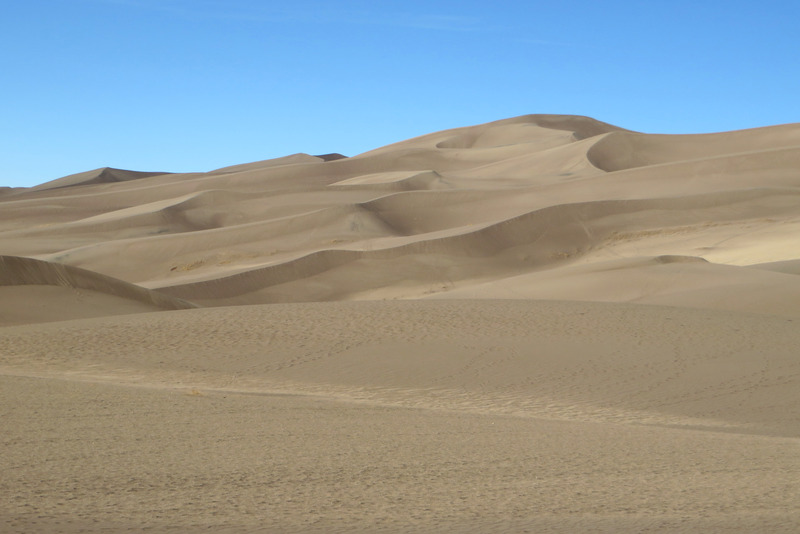
Home to the largest sandbox in the United States, Colorado’s Great Sand Dunes National Park and Preserve has sand dunes that can climb over 750 feet tall, piled in front of the Sangre de Cristo mountains. If the “Dune” saga took place in America, it would be set here, and while it may be a far cry from Arrakis, what the park lacks in spice (sorry, nerd joke), it makes up for with recreational activities. You have the rare chance to go sand-boarding or sand-sledding down the soft dunes, but there are also wetlands and forests, as well as backcountry, though it is best reserved for experienced mountaineers. If you visit in the summer, cool off in Medano Creek at the base of the dunes or explore the Medano Pass Primitive Road via a fat bike where you’ll ride through sections of sand, rock, and through creeks.
2023 annual visitors: 512,219 (#39)
Great Smoky Mountains National Park – North Carolina and Tennessee
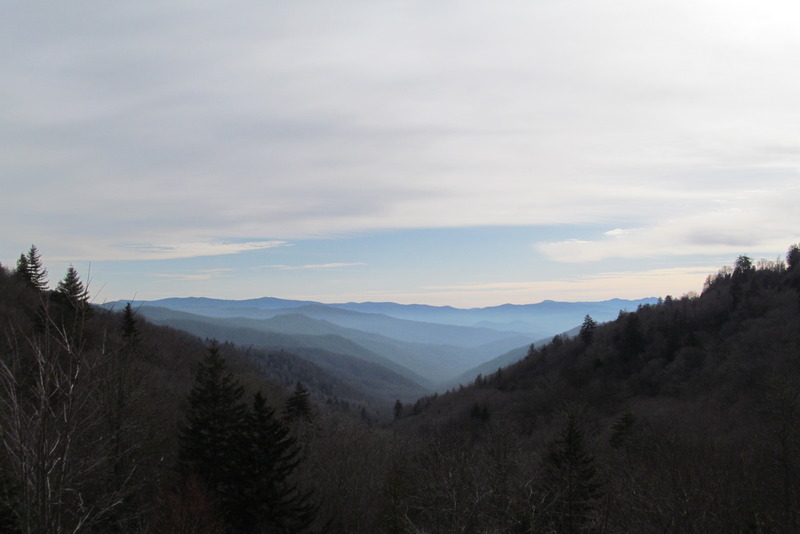
Established in 1926, Great Smoky Mountains National Park covers one of the oldest mountain ranges in America, straddling the ridgeline of the Great Smoky mountains and Blue Ridge mountains, both subranges of the greater Appalachian Mountains. The park had 13.3 million visitors in 2023, the second highest year on record, and is the most visited national park in the country annually. Across its nearly 523,000 acres, you’ll find winding trails in dense forests teeming with more than 1,400 plant species, babbling streams and wildlife like Bobcats, Red Foxes and River Otters. The Smokies, as they’re called because of the consistent morning fog in the area, is also a bird watchers paradise with more than 200 species in the park. Due to the area’s popularity, there’s not really a time of year when you can beat the crowds, but if you come in Autumn, you can see the colorful fall foliage, and if you opt for the spring, you’ll get weather that hovers in the mid-70s by day and flora in bloom.
2023 annual visitors: 13,297,647 (#1)
Guadalupe Mountains National Park – Texas
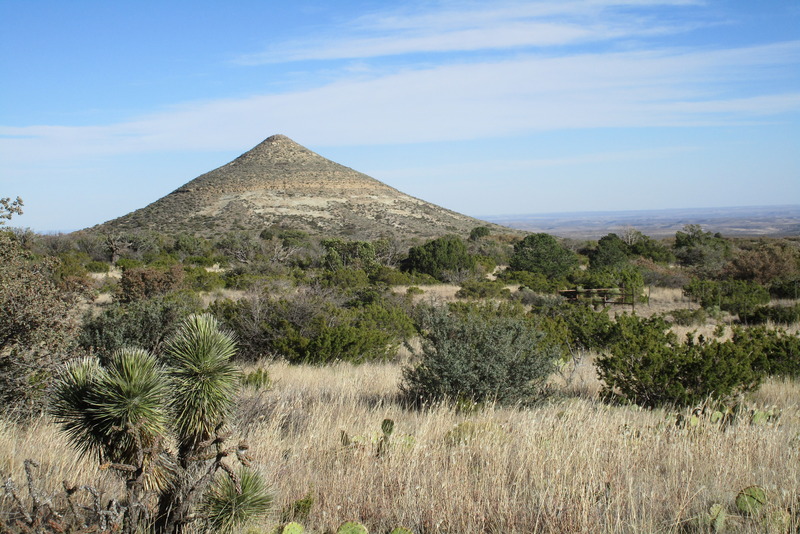
With the four highest peaks in the Lone Star state, it’s a surprise that Guadalupe Mountains National Park isn’t more popular. Abutting the New Mexico border east of El Paso, the park sees far less visitors than Big Bend National Park, roughly four hours south. In fact, Guadalupe is one of the least visited parks in the country, which naturally means it should shoot to the top of your list. Within the perimeter of the 86,000 acre park, you’ll find desertscapes, woody canyons and pine forests filled with Pinyon Pines and Douglas Firs. The park also protects the Capital Formation, a Permian fossil reef that’s as impressive to see as it is to learn about. The Permian formation was previously a living coral reef that is now preserved in rock and the complex at Guadalupe Mountains National Park is one of the most extensive and studied in the world. Hiking here is a given, with 80 miles of trails including steep terrain with more challenging switchbacks.
2023 annual visitors: 227,340 (#52)
Haleakala National Park – Hawaii
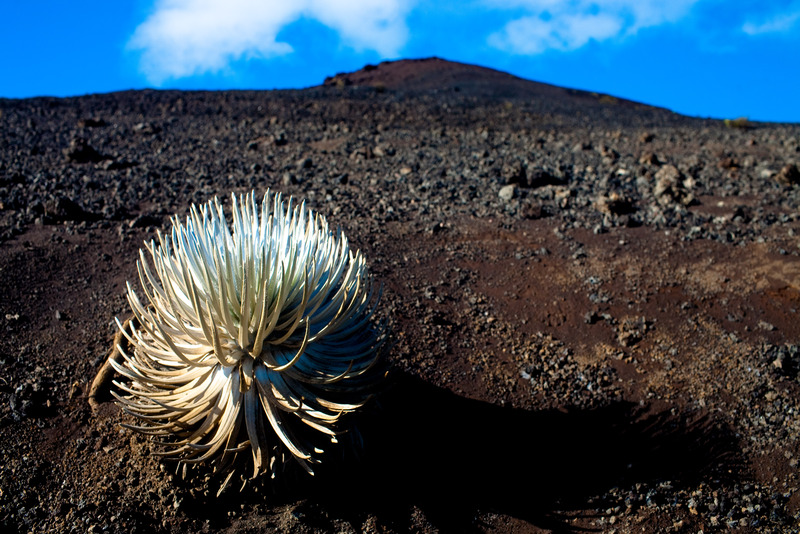
One of just two national parks in Hawaii, Haleakala National Park is named after the dormant volcano within the park’s boundaries. Haleakala covers nearly 25,000 acres of precious Maui land and offers voyagers 30 miles of hiking trails ranging from short out and back trips to journeys that can span days. Paths can lead through the shrublands of the summit district and into the volcano’s crater — a red and orange region of the park that looks like you’re trekking across Mars — or can wind through a subalpine zone and down into the Hana rainforest district. Visitors who can’t dedicate a huge chunk of time to park exploration can make a reservation and head to the summit to watch the sunrise over Haleakala — an experience that is unforgettably beautiful.
2023 annual visitors: 791,292 (#29)
Hawai’i Volcanoes National Park – Hawaii
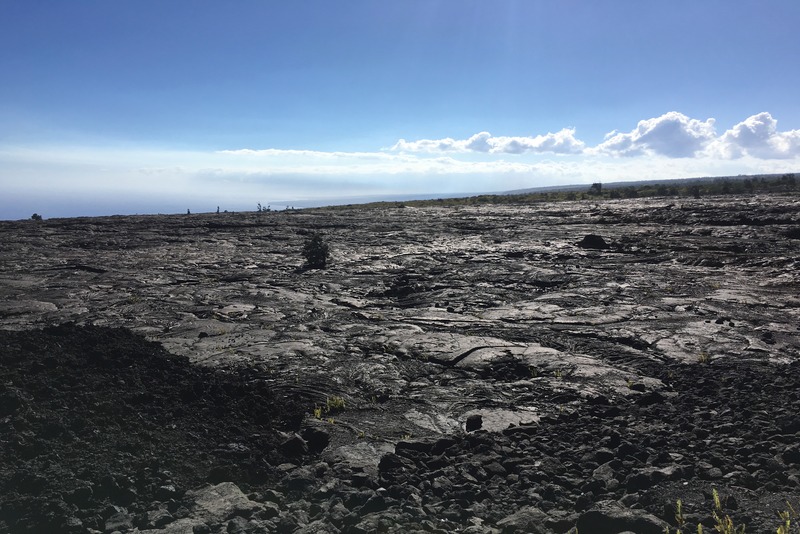
Out of the two national parks in Hawaii, the Big Island’s Hawai’i Volcanoes National Park is definitely the more explosive. You’re here to check out two active volcanoes: Kilauea, which last erupted on January 5, 2023, and Mauna Loa, which is the largest active volcano on the planet (by volume and mass) and last erupted on November 27, 2022. Both volcanoes are surrounded by some of the most incomparable terrain on Earth. At times it will feel like you’re traversing an uncharted planet as you hike past volcanic steam vents, lava tubes and rivers of flowing lava. Our favorite hikes include the Crater Rim Trail that follows the summit caldera of Kilauea, and the Nahuku, or Thurston Lava Tube, hike that takes you through a tropical rainforest. The park extends from sea level all the way up to the summit of Mauna Loa at 13,677 feet and carries a breadth of ecosystems and Hawaiian species like the endangered honeycreepers. In the 1980s, the national park was designated an International Biosphere Reserve and a UNESCO World Heritage Site, making it an important research location for work related to climate change and sustainability.
2023 annual visitors: 1,620,294 (#19)
Hot Springs National Park – Arkansas
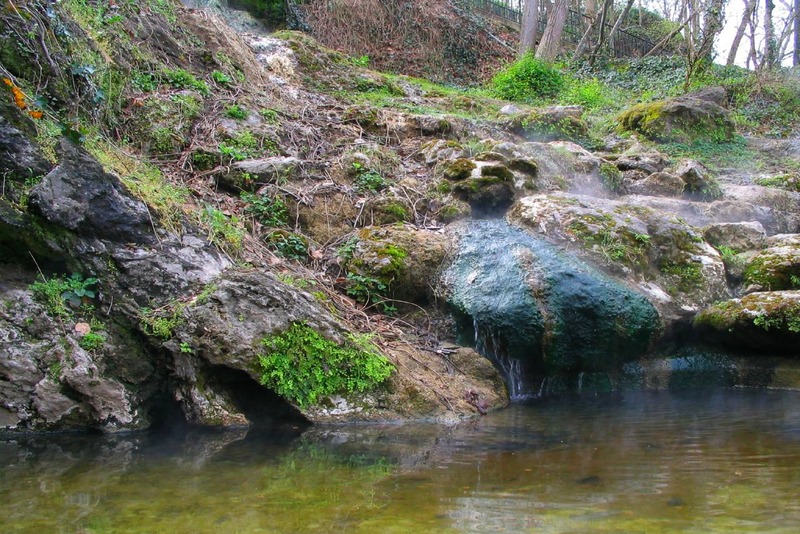
This is a national park that can make every member of the group happy, from the grit-loving outdoors-person to the one who thinks an ultra-luxe Coachella Safari tent is real camping. Located in and around the town of Hot Springs, the park is less than an hour’s drive from Little Rock and provides a healthy mix of nature and self-care. We’re talking brambling trails that lead to breweries, soaking in some of America’s most historic bath houses and taking in nature. There’s 26 miles of hiking trails to wander here, including the Tufa Terrace Trail which follows a leafy path to the largest visible spring in the park, the Hot Water Cascade. Explore the trails before decompressing at any one of the legendary soaking pools on Bathhouse Row. We’re fond of Buckstaff Bathhouse, which has been in continuous operation for 114 years, and Quapaw Baths and Spa with their opulent thermal pools and spa services that include Swedish massages and facials – a far cry from camping in the woods.
2023 annual visitors: 2,502,967 (#14)
Indiana Dunes National Park – Indiana
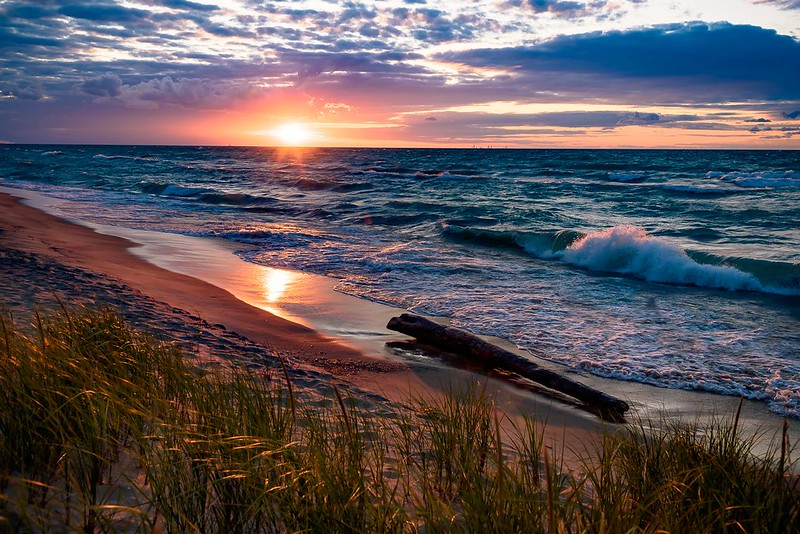
Established in 2019, Indiana Dunes National Park is a rookie in the national parks game. The Northwestern Indiana park is less than an hour from Chicago by car and is spread across roughly 20 miles of Lake Michigan shoreline, making it a shoo-in summer beach destination. As the name suggests, you’re here for the famed Indiana sand dunes that sit off the shore – impressive, 4,700 year-old sand ridges best viewed on the Tolleston Dunes Trail. Beyond the dunes, you’ll find mixed tundra that include oak savannas, bogs, rivers, forests, marshes and sun-drenched prairies. Indiana Dunes is also known for its diverse ecosystems, supporting over 1,100 plant species and 350 different types of birds.
2023 annual visitors: 2,765,892 (#13)
Isle Royale National Park – Michigan
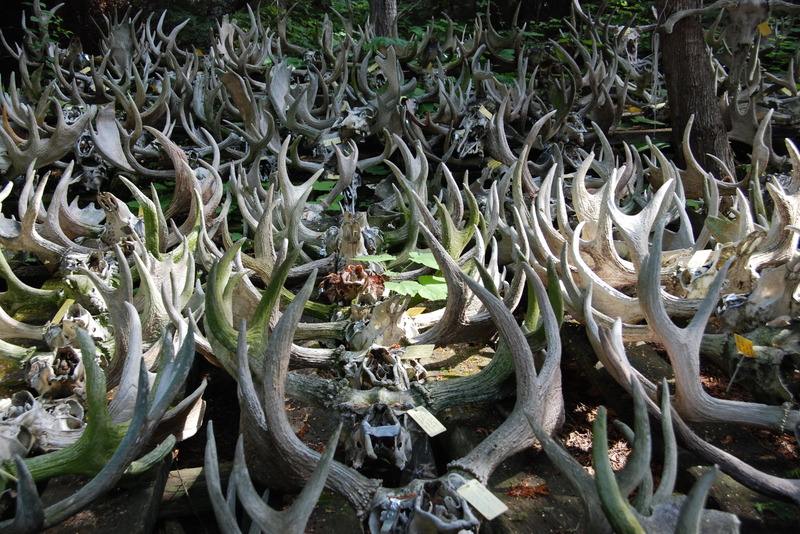
If an entire national park could qualify as a hidden gem, this one would be it. All the way up in Michigan’s Upper Peninsula, Isle Royale National Park consists of a little known island in the middle of Lake Superior that saw just shy of 29,000 visitors in 2023. Covering 850 square miles that include Isle Royale and its surrounding waters, the park is open from April 16 through October 31 annually. Its remoteness is reason enough to love it, and that solitude is best appreciated along the park’s 165 miles of hiking trails, including the challenging Greenstone Ridge Trail which follows the island for 40 miles from end-to-end and leads to the peak of Mount Desor. There are 36 campsites to choose from after a day of touring lighthouses, spotting wildlife like red foxes, timber wolves and beavers, or venturing around any of the island’s seven interior lakes. That said, if roughing it isn’t your idea of fun, plan to stay at the Rock Harbor Lodge or reserve a Windigo Camper Cabin. Wherever you choose to stay, make sure to carve out some time for kayaking and scuba diving in Lake Superior.
2023 annual visitors: 28,965 (#59)
Joshua Tree National Park – California
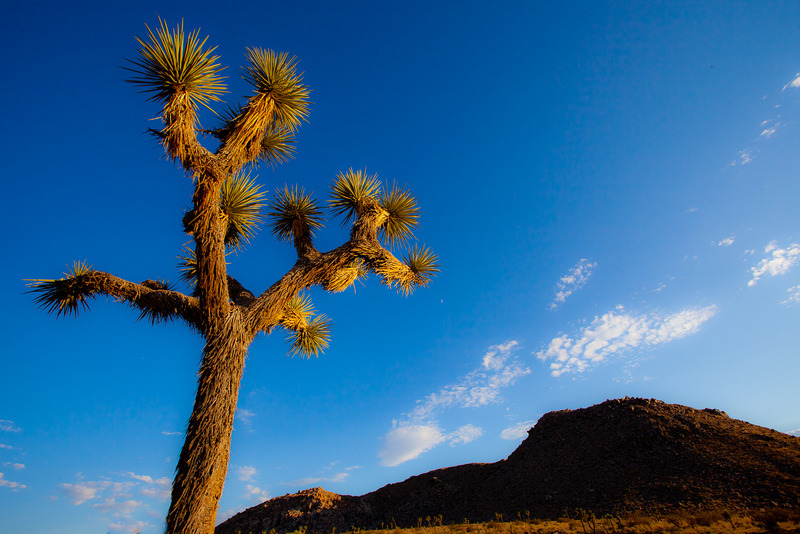
More than a U2 album or a playground for rich Angelenos looking to escape the smog, Joshua Tree is an 800,000 acre national park split between the Mojave and Colorado ecosystems. Expect to see flora like yucca, shrubs, cacti and the famous Joshua Tree – a succulent member of the Agave family that stores water to thrive in dry, California desert. Like nearly all of the parks on our list, Joshua Tree National Park is a prime destination for short hikes as well as multi-day trips where you can camp out beneath the stars. The park is also popular for bouldering and rock climbing. If you don’t want to commit to more than a day at the park, Joshua Tree is roughly two hours from Los Angeles, making it a great spot for a day-trip. We recommend visiting in the fall or winter when temperatures aren’t so hot that you’ll hallucinate sans Ayahuasca.
2023 annual visitors: 3,270,404 (#9)
Katmai National Park and Preserve – Alaska
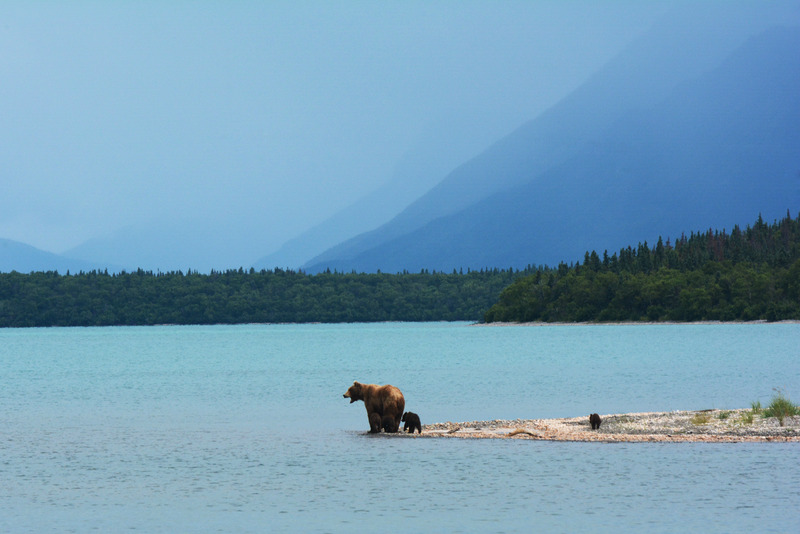
There’s a lot of fantastic activities at Alaska’s Katmai National Park and Preserve, from perusing the craggy Katmai Coast and fishing, to scrambling around any of the 14 active volcanoes and learning about the park’s roughly 900 prehistoric human dwellings – the highest concentration in North America. All of that is nice and can keep you entertained for days, but that’s not why you’re here. You’re visiting Katmai because this park roughly 290 air miles from Anchorage is the brown bear mecca of the country. With more than 2,000 brown bears gallivanting across the park, expect to spot at least one, especially during the summer. In July, during the world’s largest salmon run, you’re liable to see a bear catching an airborne salmon in its chops along the banks of the Brooks River or off of the shores of Brooks and Naknek Lakes. Whatever you do, make sure to pack your insect repellant, as the mosquitoes here can be fierce.
2023 annual visitors: 33,763 (#58)
Kenai Fjords National Park – Alaska
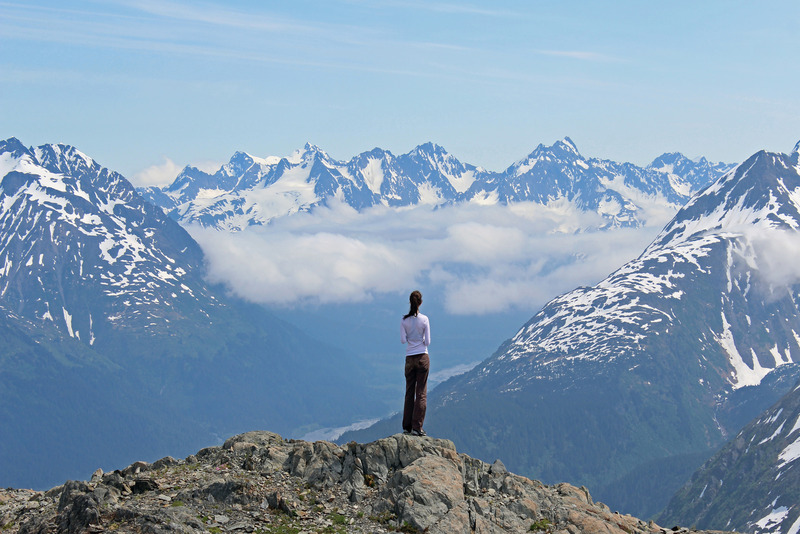
Kenai Fjords National Park is carved straight from the Ice Age. You’ve come to this park near the lovely harbor town of Seward, Alaska to marvel at the glaciers and icefields (before they’re gone) and catch a glimpse of the locals, like sea lions, otters, puffins and gray whales, putting on a show in the fjords. If you want to hike, visit Exit Glacier, one of the most traversed glaciers on the planet, on the outer edge of the Harding Icefield. Follow the two-mile out and back Glacier Overlook Trail to observe the jagged blue ice of the slopey glacier on foot, or traverse the area by car — it’s the only drivable part of Kenai Fjords. In the wintertime, you’ll want to rent a snowmobile or strap on some cross-country skis to explore the icy tundra. If you’re keen on seeing the area by boat, you can book a tour leaving from Seward and get an up-close look at the glacier.
2023 annual visitors: 387,525 (#46)
Kobuk Valley National Park – Alaska
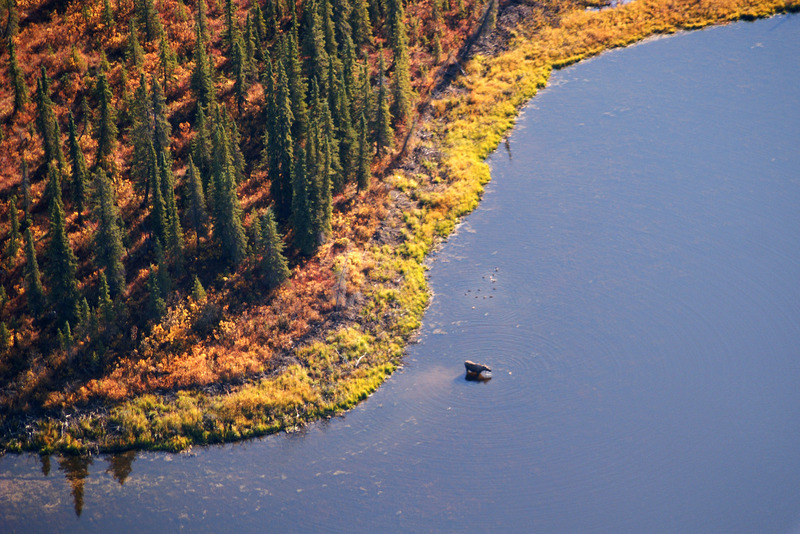
Kobuk Valley National Park is the best place to catch the annual migration of the Western Arctic Caribou Herd, where over 200,000 of the mammals cross the Kobuk River as part of a 600-mile journey. Visit in early April to watch the herd marching northward through the 1.7 million acre park in all its springtime splendor. While you probably won’t undertake your own 600 mile migration during your trip, you can romp through boreal forest or float down the slow-moving Kobuk River by raft. Enclosed by the Baird and Waring Mountains, the Kobuk Valley is situated in Northwestern Alaska, 26 miles north of the Arctic Circle and 75 miles east of Kotzebue. It’s rich with wildlife like wolves, grizzly bears, moose, foxes and porcupines. Millions of migratory birds flood the park each summer, including Arctic Terns, Swans, Geese and Cranes. If you like camping, make sure to visit the Great Kobuk Sand Dunes, Little Kobuk Sand Dunes, and the Hunt River Dunes; all of which are the largest active sand dunes in the Arctic.
2023 annual visitors: 17,616 (#60)
Lake Clark National Park and Preserve – Alaska
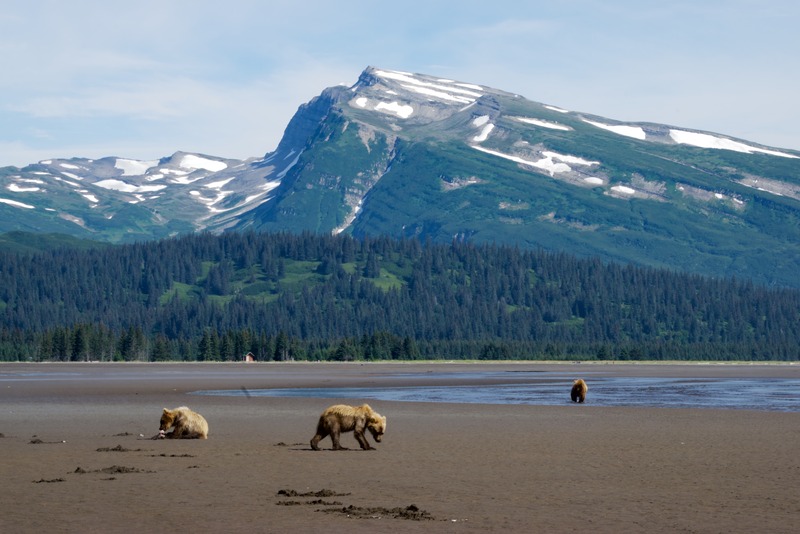
If you want to fly fish in Alaska, head to beautiful Lake Clark National Park and Preserve. At just a little over 100 miles southwest of Anchorage, the park boxes in four million acres that spread from the shores of the Cook Inlet across the Chigmit Mountains, a jagged mountain range with two active volcanoes, Mt. Redoubt and Mt. Iliamna. It’s a park that has a little of everything including Alpine tundra, glaciers, rivers, forests, coastal lands, and most importantly, incredible fly fishing opportunities. Lake Clark also plays a crucial role as one of the key headwaters for Bristol Bay fishing, which is the epicenter of the largest salmon run on the planet. Hikes here range from easy (see the roughly three mile out-and-back Beaver Pond hike) to challenging (see the seven-to-10-day long Telaquana Route). The park is also the ancestral homeland of the Dena’ina people who still depend on the land and water here. You can learn more about their culture and history at the Kijik National Historic Landmark and Archeological District in the park.
2023 annual visitors: 16,728 (#61)
Lassen Volcanic National Park – California
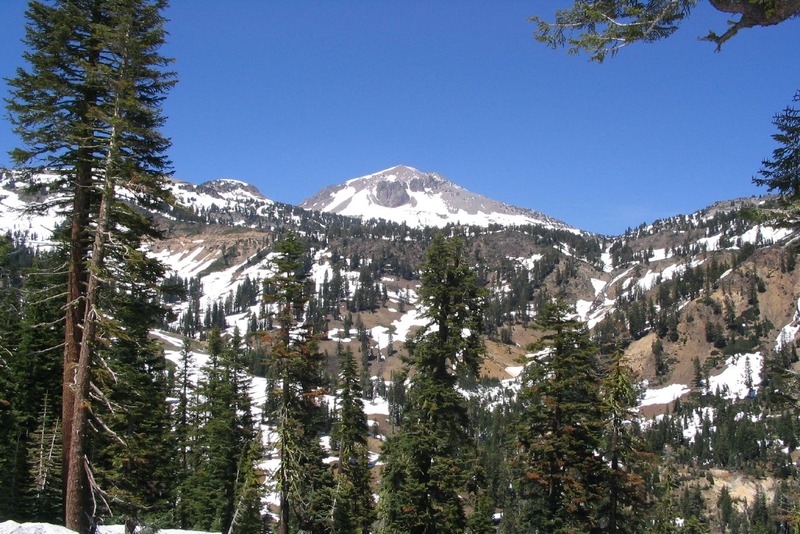
Most people won’t mention Lassen Volcanic National Park when asked about their favorite national park in California and that’s a shame. While Lassen Volcanic National Park may lack the prestige of Yosemite, Joshua Tree and Redwoods, the park has some pretty remarkable nature, like the Lassen Volcano, the largest plug volcano in the world. In fact, Lassen Volcanic National Park is one of the only areas on the planet where you can find cinder cone, plug dome, shield and strato volcanoes (or the four beasts of the volcano apocalypse) in the same place. The park is situated in Northeastern California where the Cascade Mountains, Sierra Nevada Mountains, and the Great Basin meet. In addition to the lava fields and glacial moraines, there are boiling springs, bubbling mud pots and gurgling steam vents. There are ranger-led snowshoe walks to be taken in the winter months, though if you’re not up for that, just until late spring when the roads into the park have been cleared of snow. After the Dixie Fire greatly affected the park in 2021, areas of the park like Juniper Lake and Warner Valley remain difficult to access, so check the National Park Service website for updates before visiting.
2023 annual visitors: 418,978 (#43)
Mammoth Cave National Park – Kentucky
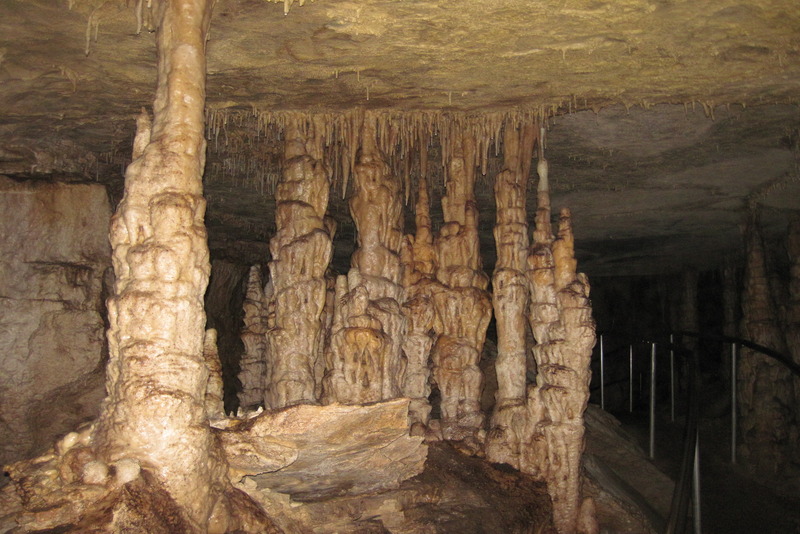
Mammoth Cave National Park has one of the oldest tourist attractions in the country, Mammoth Cave, the longest known cave system on Earth. Before you visit this park less than an hour and half drive from Louisville, you’ll want to make reservations for one of the many cave tours – it’s THE thing to do here. However, within its 53,000 acres, Mammoth Cave National Park also protects a portion of the Green River Valley, and there’s over 80 miles of hiking trails that run through the park along with 60 miles of backcountry trails appropriate for horseback riding.
2023 annual visitors: 654,450 (#33)
Mesa Verde National Park – Colorado
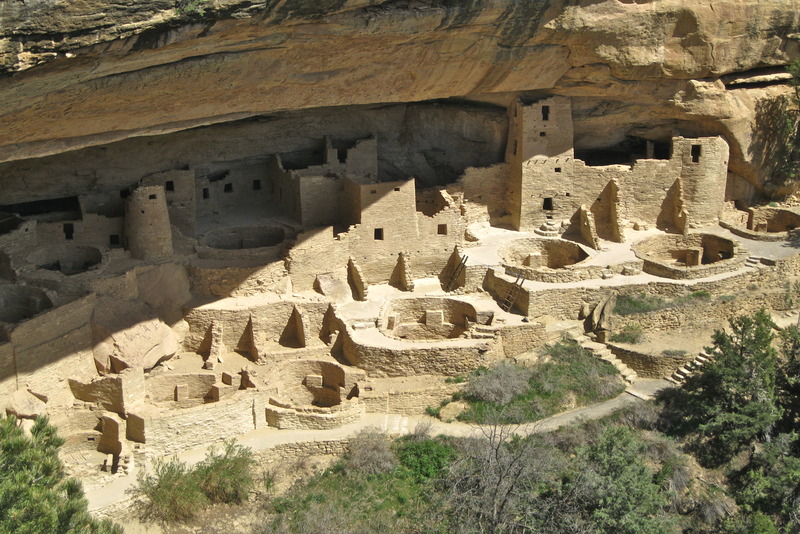
Home to over 600 ancient ancestral Pueblo settlements that are said to have been inhabited from 550 CE to 1300 CE, Mesa Verde National Park is one of the best national parks to learn about the country’s Indigenous heritage. President Teddy Roosevelt established the park in 1906 and pledged to protect the legacy of the sacred cliff dwellings that Indigenous Puebloans created thousands of years ago. Beginning each May, you can take a ranger-led tour to get a closer look of the sandstone-shale rock dwellings, just make sure to hike the Petroglyph Point Trail as well. Two-and-a-half miles out and back, the trail will bring you past small ruins and awe-inspiring views of Navajo and Spruce Canyons, but the piece de resistance is the massive, ancient petroglyph panel engraved in stone. Beyond these Indigenous settlements, the southwest Colorado park has an archeological museum, gorges, forests and animals like wild horses.
2023 annual visitors: 505,194 (#41)
Mount Rainier National Park – Washington
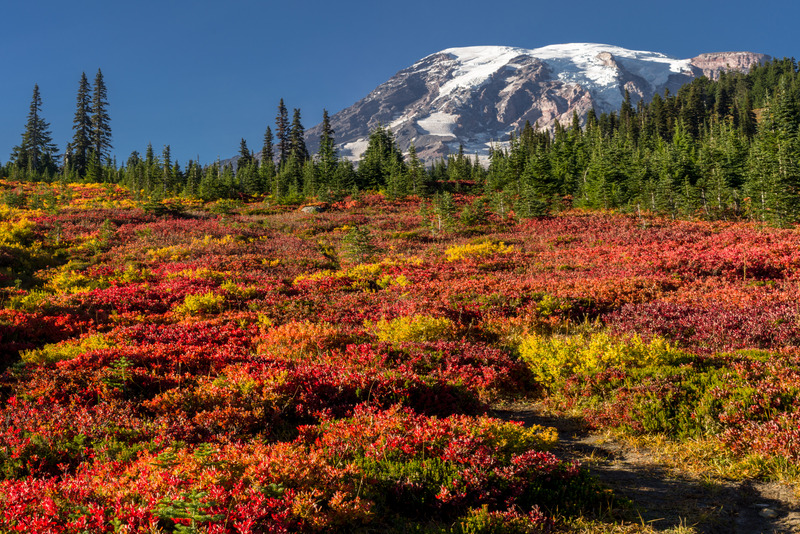
On a clear day in Seattle, Mount Rainier, the namesake of this park, is visible in the distance; its striking white coat of snow varies in density based on how chilly it is outside. A little less than two hours south of the city, Mount Rainier National Park is one of the most visited national parks and centered around what is the most conspicuous mountain (and active volcano) in the Cascades, rising to 14,410 feet. You’re here to frolic through the wildflowers on hikes in the spring, and in the winter, take advantage of your proximity to Washington’s largest ski resort, Crystal Mountain with its great action on the slopes. Mount Rainier is also known for its waterfall hikes. There’s 23 falls in total, including Narada Falls, which may be the most approachable destination in the park. On a sunny day, you can watch as the water drops 168 feet from the top tier and 20 feet from the lower tier, creating a rainbow in the mist lingering at the base of the chute.
2023 annual visitors: 1,674,294 (#18)
National Park of American Samoa – American Samoa
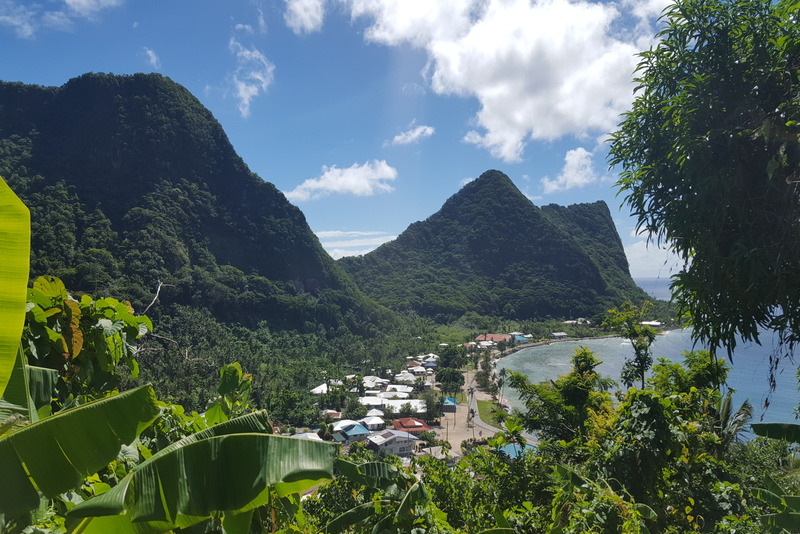
Known as the “Islands of Sacred Earth,” American Samoa has worked with the National Park Service since 1993 when Samoan chiefs entered a 50-year lease that established the National Park of American Samoa. Spread across the three islands of Tutuila, Ofu and Tau, this is the only national park located in the Southern hemisphere, roughly 2,600 miles from Hawaii. You’re in the tropics and you’re here to break up hours relaxing on the beach with dips in the ocean and maybe a snorkel through the coral reefs. Tropical rainforests cover each of the three islands and, on Tutuila, you’ll find volcanic ridges that overlook Pago Pago Harbor. Be on the lookout for loads of tropical birds and fruit bats, including the endangered flying fox with its impressive wingspan.
2023 annual visitors: 12,135 (#62)
New River Gorge National Park and Preserve – West Virginia
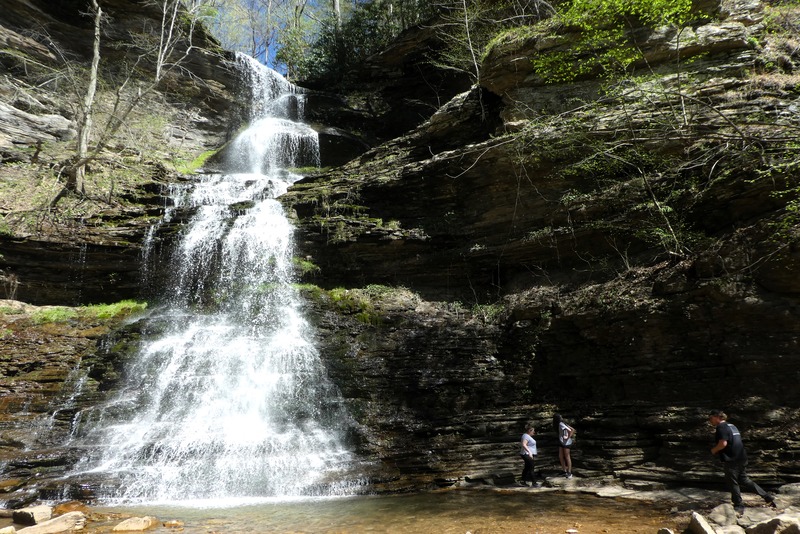
Take us home, country road, to America’s — and West Virginia’s — newest national park. The New River Gorge National Park and Preserve was established in 1978, but only officially designated in December 2020, making it the country’s 63rd national park. While the national park may be the newest, the New River is one of the oldest rivers in the world, clocking in somewhere between 10 to 360 million years old. The record-breaking park is also home to the New River Gorge Bridge, one of the longest single-span steel arch bridges in the Western Hemisphere. With 70,000 acres and wildlife like bald eagles, osprey, river otters and mink visible via foot, bicycle, boat, and whitewater raft, there’s a lot to do here. The real showstopper, however, is Sandstone Falls, which stretches 1,500 across on the New River.
2023 annual visitors: 1,707,223 (#17)
North Cascades National Park – Washington
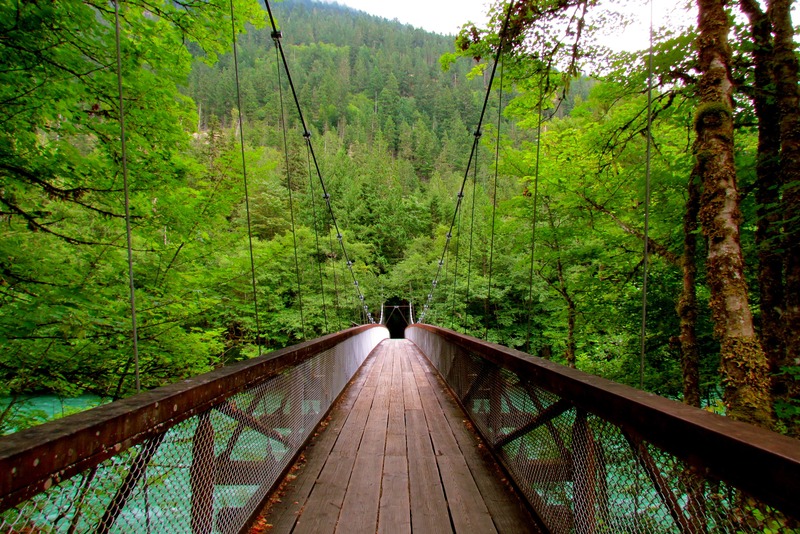
Less than three hours from Seattle by car, North Cascades National Park is one of the best places to explore Washington’s roughened wilderness, alpine-fed waterfalls and conifer-covered mountains. There’s over 500,000 acres here bisected by the Skagit River and covered with more than 300 glaciers – more than anywhere else in the lower 48. You’re here to go kayaking and fishing in glistening lakes, hike through forested valleys and dust off your mountain bike. Look out for wildlife like bobcats, lynx, river otters, grey wolves, and black and grizzly bears. You’ll access the park by the North Cascades Highway, a 30-mile stretch with lots of vistas and approachable trails along the way.
2023 annual visitors: 40,351 (#57)
Olympic National Park – Washington
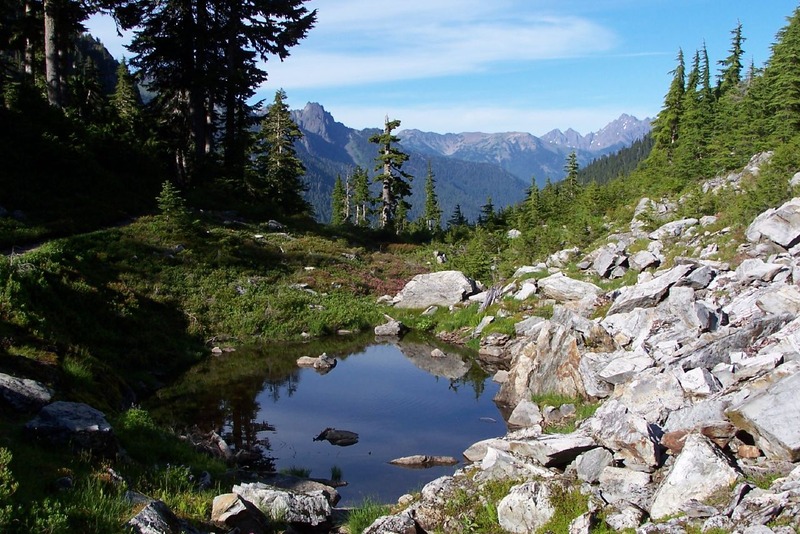
Olympic National Park protects nearly one million acres of western Washington, a staggering amount of land considering that over 95 percent of the park is designated wilderness. Once you arrive, you’ll want to get lost in the verdant forests that lead to the Washington coast and overlook the snow-capped Olympic mountains. Only a two hour drive from Seattle, this is a great place for your multi-day backcountry trip or to cosplay as character from “Twilight” (if you’re into that sort of thing), but you’ll also want to make time to explore the Hoh Rainforest, which is simultaneously one of the largest temperate rainforests in the country and the wettest forest in the lower 48. Olympic National Park also preserves 73 miles of Washington’s coastline dotted with towering sea stacks and tidepools ideal for anemone-peeping.
2023 annual visitors: 2,947,503 (#10)
Petrified Forest National Park – Arizona
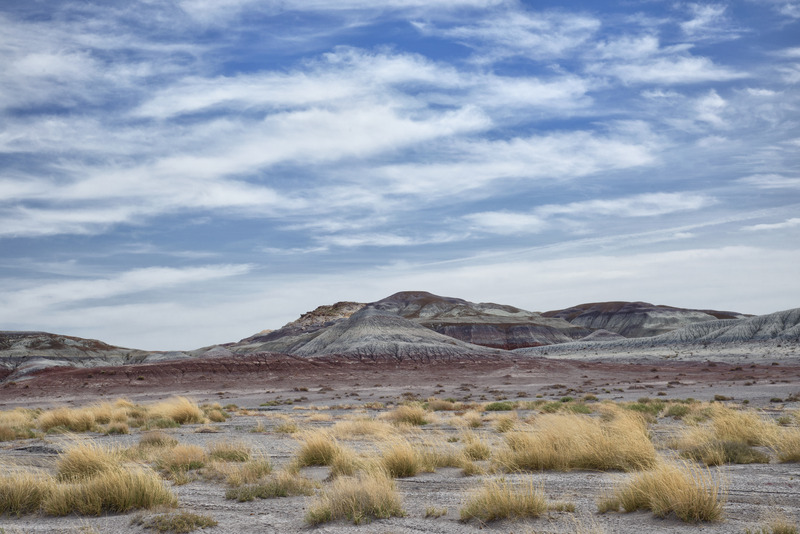
Positioned in northeastern Arizona in the Apache and Navajo counties, the Petrified National Forest combines history and science. You’re here to take in fossils and archaeology. Like petrified wood, which isn’t wood at all, but rather a Triassic fossil that forms when fallen trees are buried by sediment and shielded from decay by oxygen Once groundwater flows into the sediment, it replaces the plant materials with calcite, pyrite, and silica to form petrified wood – gorgeous fossils that look like wood but can feel as delicate as glass. Many of these fossils date back 225 million years and are part of the Chinle Formation, one of the world’s largest and most colorful concentrations of petrified wood. The park also encompasses part of the Painted Desert where wildlife like coyotes, bobcats and snakes abound, and there are archeological sites to explore amongst the craggy cliffs.
2023 annual visitors: 520,491 (#38)
Pinnacles National Park – California
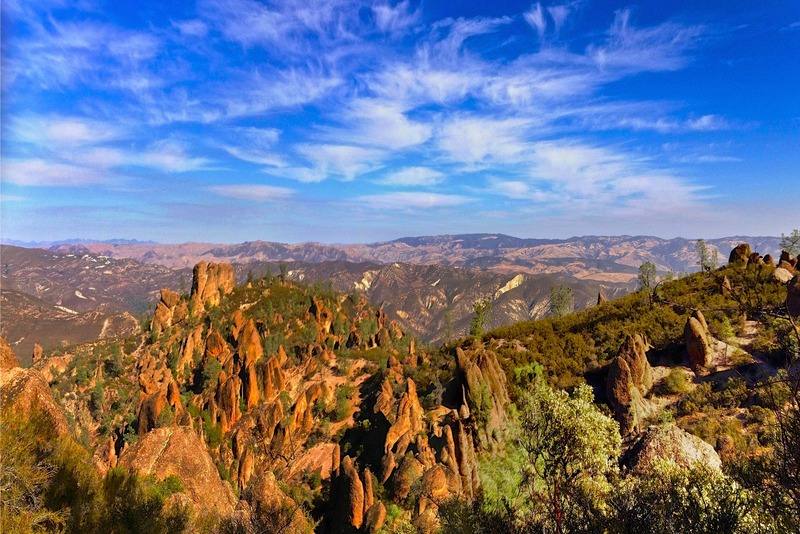
Officially designated a national park in 2013, Pinnacles National Park formed roughly 23 million years ago when volcanic eruptions caused lava to flow, ground to erode and tectonic plates to shift. Today, the park is where birdwatchers can view more than 200 species (including California condors, eagles and falcons) as well as rock spires and formations beloved by advanced climbers and mountaineers. If you lack the rock climbing skills to tackle the more challenging areas of the park, there are more approachable hikes here like the Moses Spring trail and the Bear Gulch trail, the latter of which is a one-and-a-half mile out-and-back path that leads to two separate caves – so, pack your headlamp. You can get here from San Francisco in about a two hour drive.
2023 annual visitors: 341,220 (#49)
Redwood National and State Parks – California
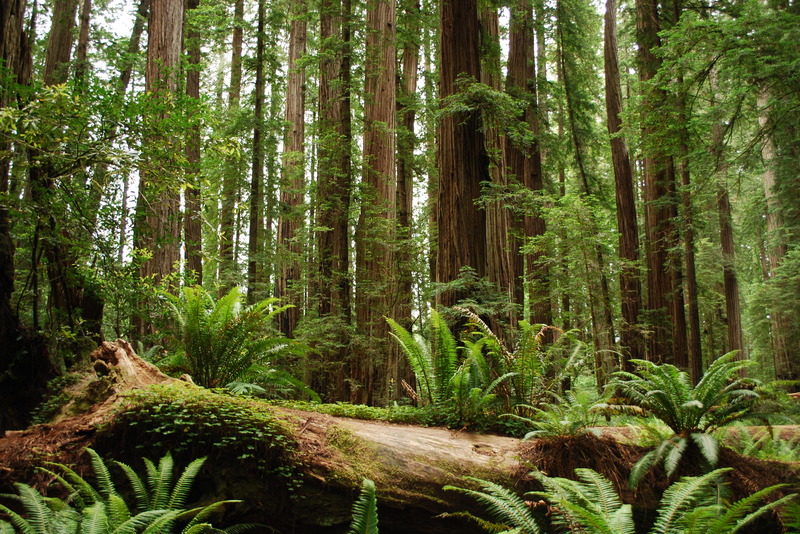
You may not have visited Redwood National Park yet, but you’ve probably seen an Instagram reel of your college roommate trying to wrap their arms around the base of one of the park’s coastal redwoods as Fleet Foxes plays. Located near the Oregon border in northwest California, the park is celebrated for some of the planet’s tallest trees, many of which are over 2,000 years old and tower more than 300 feet. Along 37 miles of California coast, you can follow rambling paths like the Big Tree Loop trail through the redwood groves. State parks are located within the park — like Jedediah Smith, Prairie Creek Redwoods and Del Norte Coast Redwoods — putting hikes like Fern Canyon trail and Tall Trees Grove at your fingertips. Before you leave, hop in the car and take a ride on Newton B. Drury Scenic Parkway or down Howland Hill Road, and get one last glimpse of the thick forests and open meadows.
2023 annual visitors: 409,105 (#44)
Rocky Mountain National Park – Colorado
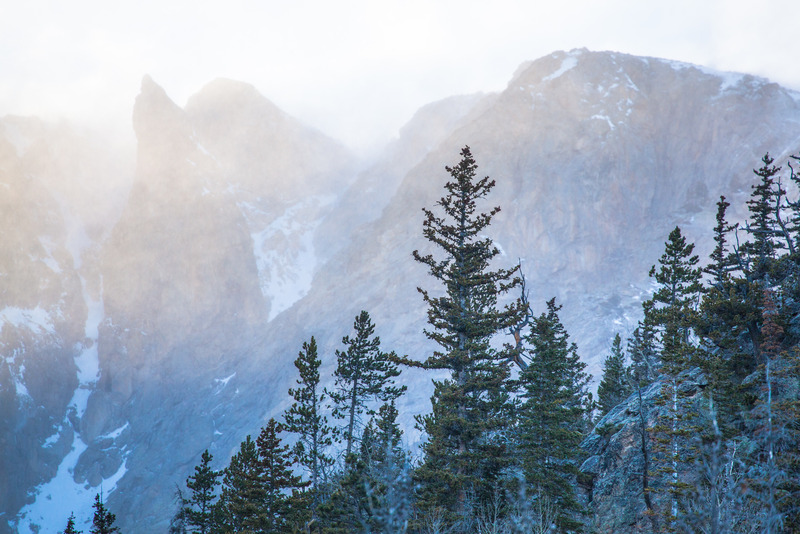
Rocky Mountain National Park saw over 4.1 million visitors in 2023 and is one of the biggest reasons people visit Colorado. It’s the first place many think of when someone says the words “national park” because it’s got it all. There are more than 300 miles of hiking trails, 147 lakes, and 77 behemoth mountains that climb above 12,000 feet. Hikes here range from easy, afternoon jaunts to extremely challenging, multi-day, life-altering treks through the backcountry. You’ll see wildlife like marmot, elk, sheep, pika, moose and more as you pass wildflower meadows and glistening alpine lakes. You can take scenic drives on routes like Trail Ridge Road that sit eight miles above the treeline. You can also horseback ride, fish, camp, and — trust us, you’ll wonder why you never did any of this before.
2023 annual visitors: 4,115,837 (#5)
Saguaro National Park – Arizona
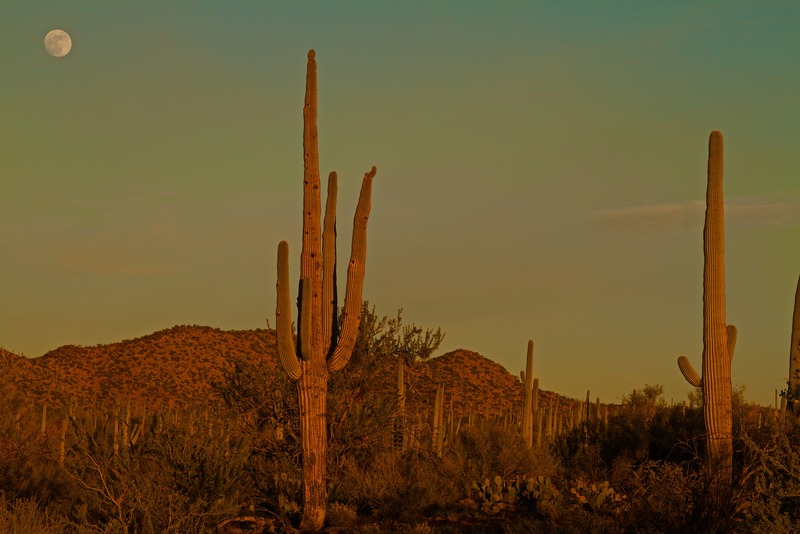
The reason you’re coming to Saguaro National Park is in its name: You’re here to see the glorious Saguaro Cacti, a species of cactus that can grow up to 50 feet tall, live for 200 years and can only be found in this region. Taking up 92,000 acres of the Sonoran Desert, Saguaro National Park is split between two districts surrounding Tucson. On the west side of the city is the Tucson Mountain District with its desert scrub and desert grassland communities. To the east sits the Rincon Mountain District where you’ll also find pine-oak woodlands, mixed conifer forests, and the finest sunsets in the park. Hiking is the best way to appreciate the cacti as well as their desert habitat, and the park has treks of all levels. The King Canyon, Sendero Esperanza, and Gould Mine Loop is a moderate 2.5 mile out-and-back full of scenic vistas and Saguaro, while the shorter Signal Hill Trail leads to ancient petroglyphs carved by the Hohokam people over a thousand years ago.
2023 annual visitors: 1,010,906 (#25)
Sequoia and Kings Canyon National Parks – California
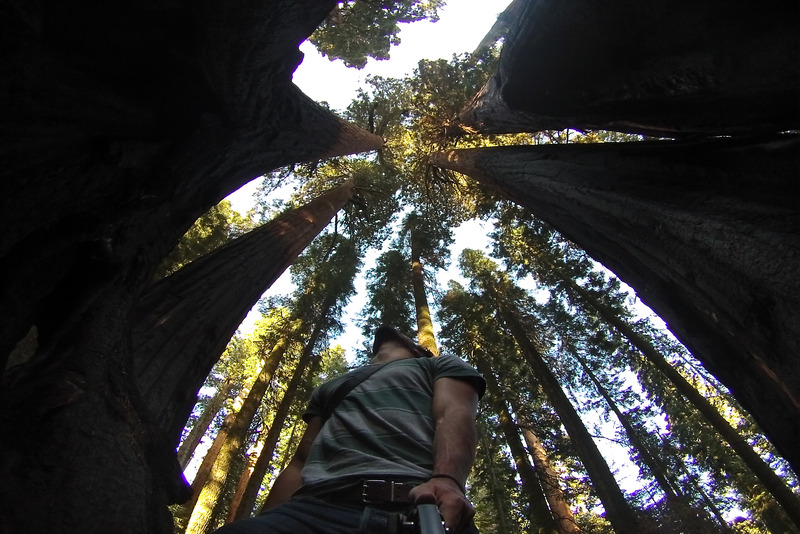
Nestled in the southern Sierra Nevada Mountains, Sequoia and Kings Canyon National Parks are contiguous parks administered by the National Park Service together. Like Laurel and Hardy or peanut butter and jelly, these two are just better together. They have mixed ecosystems with towering mountains and plunging canyons that vary in elevation from 1,300 feet in the foothills to nearly 15,000 feet at the summit of Mount Whitney, the highest mountain in the lower 48. The challenging John Muir Trail winds its way to the mountain’s summit and has myriad wildflowers along its route that are particularly delightful in the spring and the summer. Tall mountains aside, you’re also here to walk among the sequoias in the Giant Forest and to see the General Sherman tree, the largest tree in the world.
Sequoia National Park 2023 annual visitors: 980,567 (#26)
Kings Canyon National Park 2023 annual visitors: 643,065 (#34)
Shenandoah National Park – Virginia
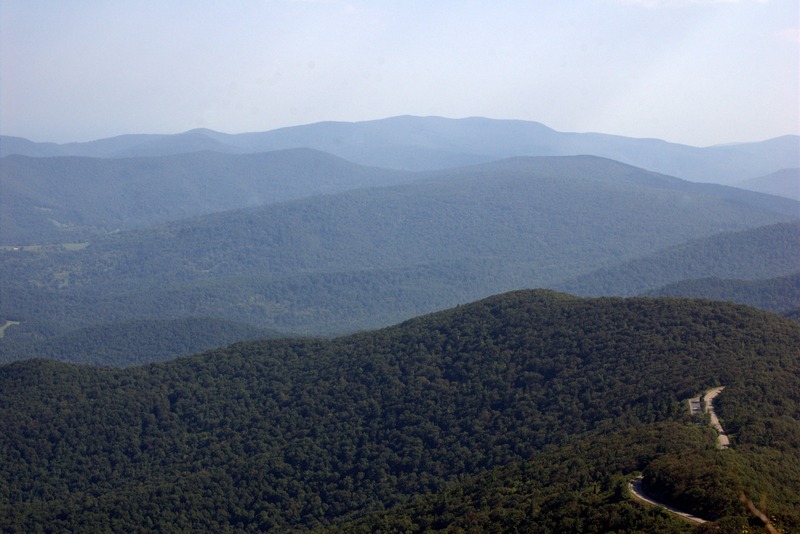
The Blue Ridge Mountains have inspired so many Americana lyrics that they deserve their own song writing credits, and, just a little over an hour from Washington D.C. by car, Shenandoah National Park is one of the best places to see them. With 500 miles of hiking trails, 101 of which are part of the famed Appalachian Trail, this park is a great place to explore waterfalls and wilderness, and climb some rocks. White-water rafting and fly fishing are also popular activities, both best undertaken in the spring when the park blooms with wildflowers.The road warriors among us can queue up a playlist of that mountain-loving music and take a ride on Skyline Drive, a 105-mile scenic road with plenty of stunning photo ops. Shenandoah National Park is a great stop if you’re driving along Blue Ridge Parkway (maybe on your way to Great Smoky Mountains National Park) or if you and your family need a break from Smithsonian-hopping in the capital.
2023 annual visitors: 1,576,008 (#20)
Theodore Roosevelt National Park – North Dakota
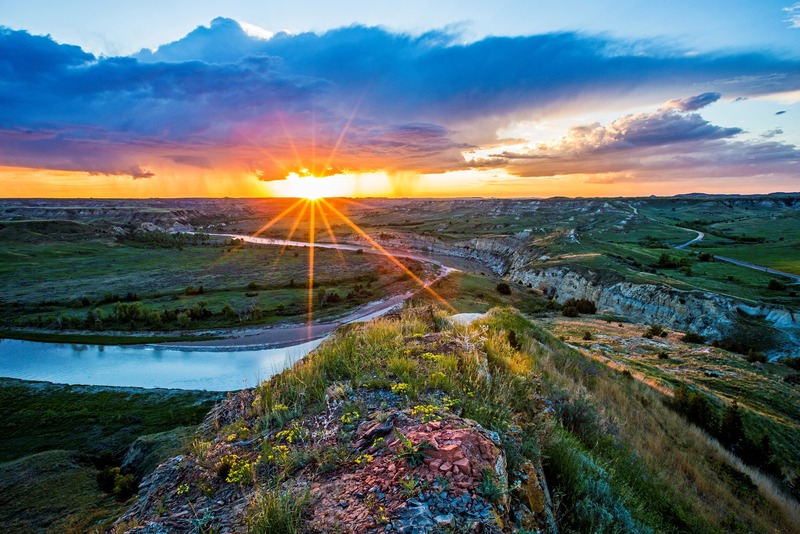
When President Theodore Roosevelt first visited the badlands of North Dakota to hunt Bison in 1883, he fell in love with the rugged landscape of the area, working to protect the land before President Truman established Theodore Roosevelt National Park in 1947. Today, the park’s 70,446 acres are split into three distinct units: the Elkhorn Ranch Unit, the North Unit and the South Unit, each with its own distinct mission and terrain. All are worthy of your time, from the secluded grasslands of the Elkhorn Ranch Unit to the craggy canyons and valleys of the North Unit, and the more challenging, eroded South Unit – and all have hiking and camping opportunities. But if you want to see the park from the comfort of your car, take the 48-mile South Unit drive, a scenic loop around the park with short hikes along the way. Pro tip: you’ll have a better chance of seeing wild horses and roaming bison in the morning.
2023 annual visitors: 746,862 (#30)
Virgin Islands National Park – Virgin Islands
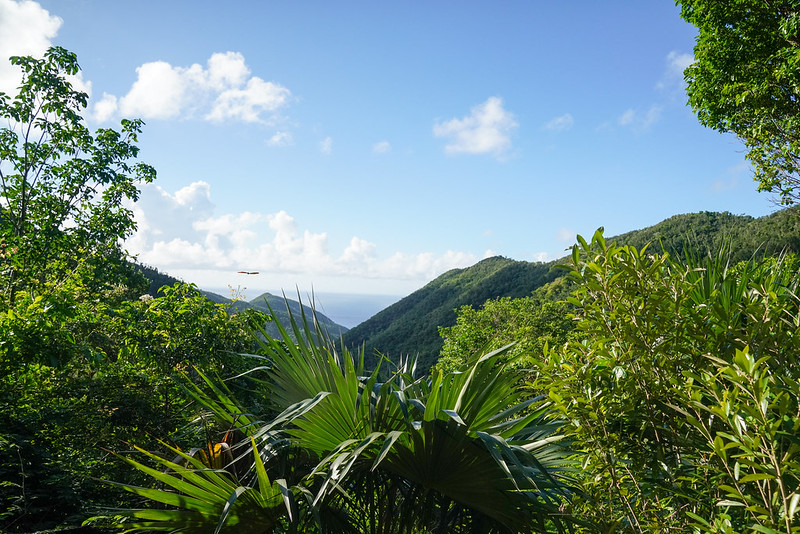
Alexa, play “Crystal Blue Persuasion” by Tommy James because mentally, we’re at Virgin Islands National Park. The park preserves roughly 60 percent of the land on Saint John Island and over nine square miles of the surrounding ocean. It’s got everything you think of when you imagine visiting the Caribbean: white sandy beaches shaded by towering coconut palm trees, crystalline waters, sea turtles and coral reefs against a backdrop of tropical forests teeming with over 800 species of plants. The park is known for preserving relics of sugar plantations and doesn’t shy away from acknowledging the part its grounds played in African slavery. It’s a challenging, but important part of the island’s history to learn about. There’s also ancient petroglyphs courtesy of the indigenous Taino people here accessible via the Reef Bay Trail, and snorkeling opportunities are plentiful at Trunk Bay, Hawksnest Bay, Cinnamon Bay and Francis Bay.
2023 annual visitors: 343,685 (#48)
Voyageurs National Park – Minnesota
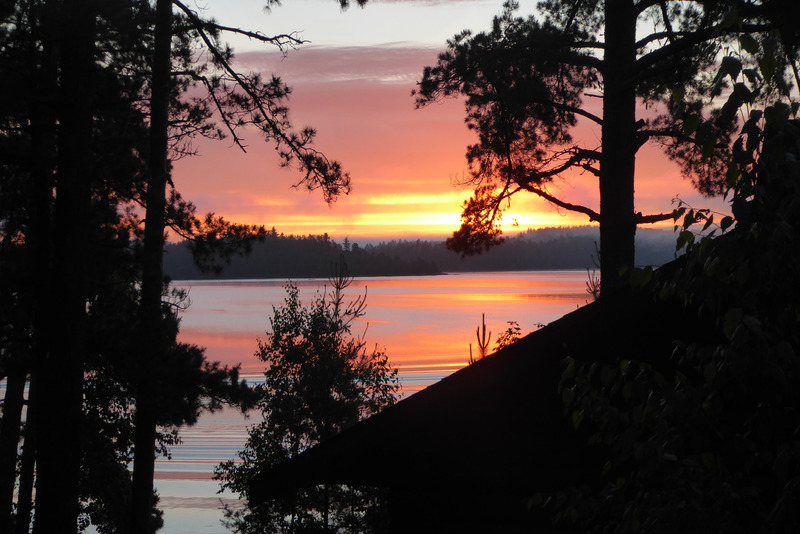
Named after the French-Canadian fur traders who were the first Europeans to regularly crisscross the area, Voyageurs National Park may be the most underrated park on our list. Nestled against the Canadian border in northern Minnesota, the park marries aquatic ecosystems with those of the upland – like conifer and hardwood forests – to create an intriguing, complex water-based park along the Hudson Bay. The Kabetogama Peninsula makes up the majority of the 218,000 remote acres here, but 84,000 of those acres are made up of water, and the only way to access the park is by boat. With four huge lakes and over 20 smaller interior lakes, fishing, swimming, kayaking, canoeing and even cliff-diving opportunities abound — and you’ll have most of that adventure to yourself as Voyageurs is one of the less-visited parks on our list. It’s paradise in the summer, however you might be better off visiting in the Winter when you’ll have a chance to see the Northern Lights after a long day of snowshoeing and sledding.
2023 annual visitors: 220,825 (#53)
White Sands National Park – New Mexico
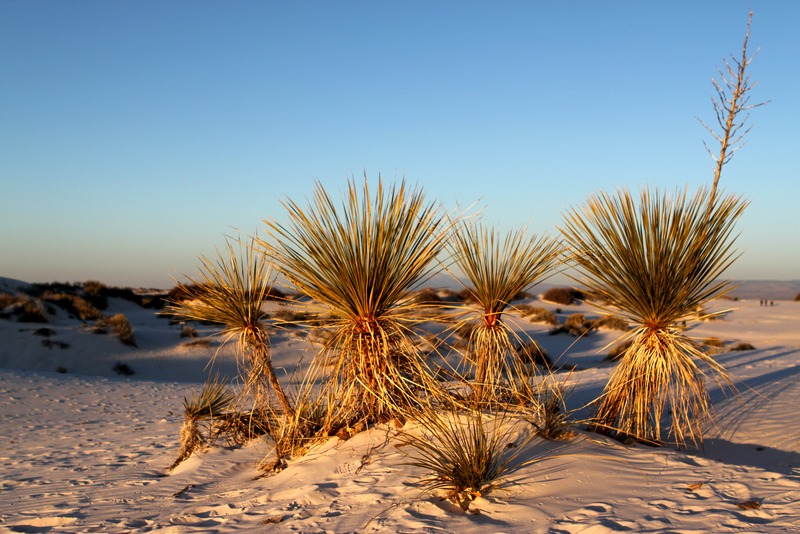
Another dune-filled newcomer on the list, the roughly 146,000-acre White Sands National Park received its national park designation in 2019. Since then, it has become New Mexico’s most visited site. You’re here to explore the largest gypsum dunefield on the planet, consisting of rolling, white sandhills that stretch on for what seems like eternity in the Tularosa Basin. Sure, you may see the occasional twisted tree while navigating trails, but dreamy white dunes set against blue skies is why this park is billed “like no place else on Earth.” Don’t forget to bring a plastic snow saucer and wax so you can sled down the sloping dunes. Whatever you do, make sure to keep a close eye on trail signs, as it’s easy to get off path when everything looks sandy white.
2023 annual visitors: 729,096 (#31)
Wind Cave National Park – South Dakota
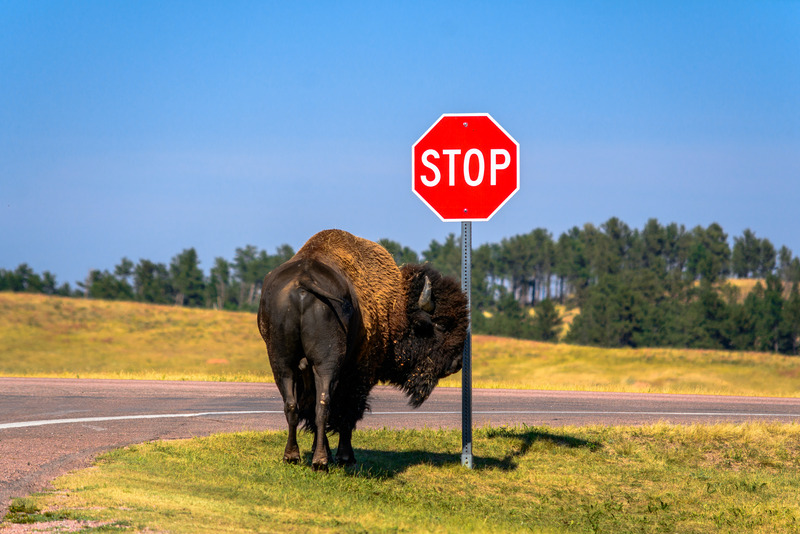
You’re in Black Hills country, a little over an hour south of Sturgis, S.D. by car, making Wind Cave National Park a great place for a short cruise on your way to or from the annual motorcycle rally. Home to the seventh longest cave in the world at 154 miles long, Wind Cave is also one of the world’s most intricate. Inside, it has the thin needles of frostwork formations and the honeycombs of boxwork formations plastered across its walls. Tours of the cave will close from May through September 2024 as the park replaces and modernizes the elevator system, so plan your trip before or after that time. If you do happen to be in the region when Wind Cave is closed, there’s still plenty to see at the park above ground, between the ponderosa pine forest and the rolling mixed-grass prairie full of wildlife like pronghorn and, of course, plenty of bison.
2023 annual visitors: 592,459 (#35)
Wrangell-St. Elias National Park and Preserve – Alaska
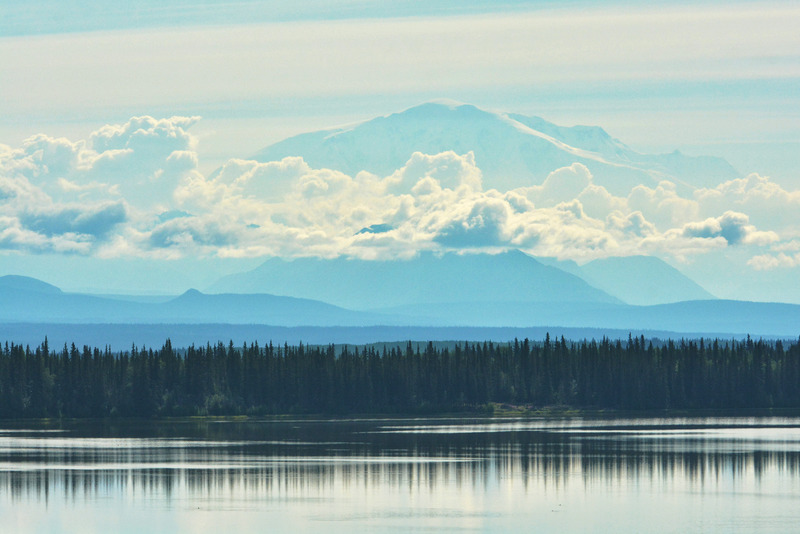
You’re here to see what the largest national park in America looks like. Wrangell-St. Elias National Park and Preserve is a mind-blowing 13 million acres and covers the same square footage as Switzerland, Yellowstone and Yosemite National Parks combined. All of that space exists largely unperturbed in southeastern Alaska along the Canadian border, north of Cape Yakataga, and has towering peaks, colossal glaciers and wildlife galore. You’ll find experienced mountaineers and backcountry enthusiasts venturing into the wild here, but Wrangell-St. Elias has plenty of opportunities for rafting and learning about the state’s mining history as well.
2023 annual visitors: 78,305 (#56)
Yellowstone National Park – Idaho, Montana, and Wyoming
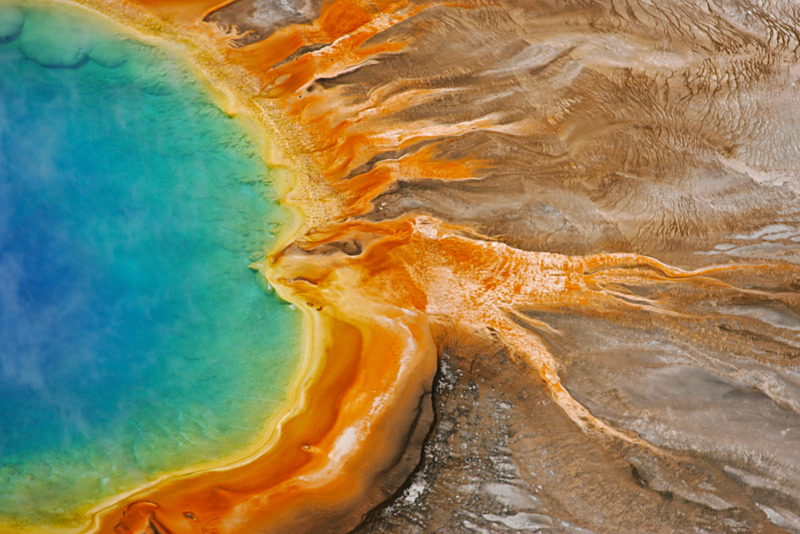
If hearing the word “Yellowstone” makes you think of the neo-western TV show, then just wait until you hear about the park. Established as the world’s very first national park in 1872, Yellowstone National Park’s boundaries do technically extend into Idaho and Montana, but Wyoming claims over 96 percent of its 2.2 million acres. The park sits atop a dormant mega-volcano and has the largest intact ecosystem in the northern hemisphere today. You’ll find half of the world’s hydrothermal features here, totaling more than 500 hot springs, geysers and pools – the highest concentration on the planet. There’s really not a bad time to visit Yellowstone. Summer is prime time for horseback riding tours and backcountry expeditions, while winter has ideal conditions for cross-country skiing and snowmobiling. You’ll access the park via the 140-mile Grand Loop Road and you’ll want to make time to explore both the Northern Loop – where you’ll be in awe of the Yellowstone Grand Canyon – and the Southern Loop – famous for being home to the geyser basin. There’s many steaming hydro-wonders to check out, but the must-see attractions are the colorful Grand Prismatic Spring, the Steamboat Geyser that shoots water high in the sky, and the world-famous Old Faithful.
2023 annual visitors: 4,501,382 (#4)
Yosemite National Park – California
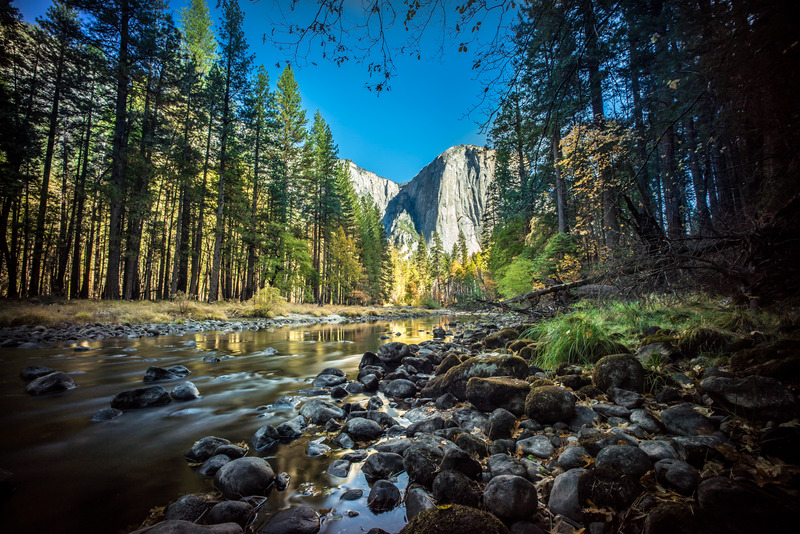
This park’s reputation precedes it: You don’t need us to tell you that you’re here to see cascading waterfalls, ancient sequoia groves, sprawling meadows and to walk grounds hallowed by some of the most impressive mountaineers in the world. Central California’s Yosemite National Park holds a special place in the American imagination, and it’s worth visiting at least once in your life. The park covers 1,200 square miles and nearly 95 percent of that land is designated wilderness. Make sure to visit Yosemite Falls – North America’s largest waterfall – which gushes strongest in the spring when it floods almost entirely with winter snowmelt. You’ll find some of the best trails in the Wawona region — a mid-elevation basin that was originally home to American Indians — and the Hetch Hetchy region — full of waterfalls and rolling rocks. If you consider yourself an experienced climber, then you’re probably well aware of Yosemite Valley, a seven-mile-wide canyon where the challenging Half Dome batholith and El Capitan reside. The latter was the focus of American rock climber Alex Honnold’s 2018 documentary “Free Solo” which chronicled his history-making, rope-free climb of the formation.
2023 annual visitors: 3,897,070 (#6)
Zion National Park – Utah
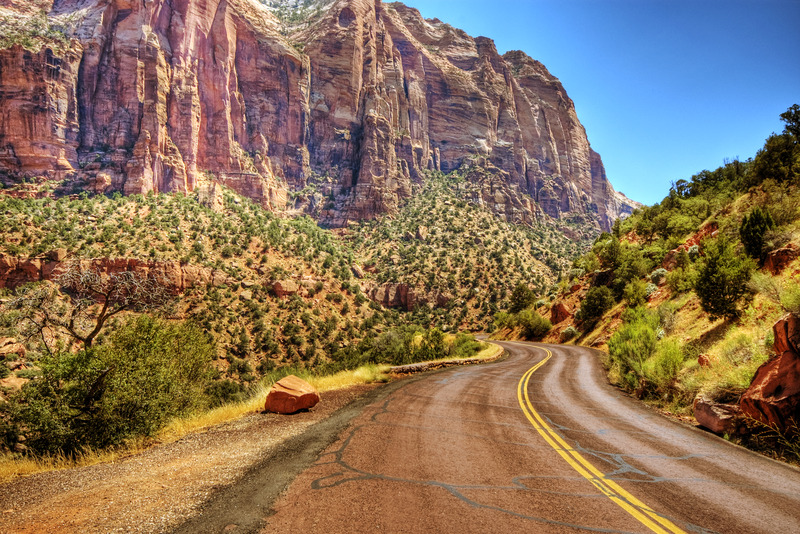
Utah’s first national park has become as synonymous with the state as skiing and Sundance. Every year, Zion National Park is one of the most popular parks in the country. Located in the southwestern part of the state, Zion comprises four life zones: desert, riparian, woodland and coniferous forest. These four distinct zones create a diverse landscape of plants and animals that fill the slot canyons, plunging narrows and sandstone cliffs that have made Zion a mountaineer’s (and an Instagrammer’s) dream. To have a successful visit here, you’ll want to plan ahead: A lottery system governs reservations for the Angels Landing hike, a strenuous trek that exposes visitors to steep cliffs and some of the finest views in the park. These reservations are released on a rolling basis, so you’ll have to remain vigilant if you hope to snag the best date. Visit in the fall when the weather is less intense and peak-summer crowds have dissipated.
2023 annual visitors: 4,623,238 (#3)


